Training tools
Most of our modules have been designed around field-based tools to encourage learning in real settings. They result from meticulous preparation, identification and selection work taken from the multitude of cases encountered by professionals in their daily lives.
Marteloscope
A marteloscope is a field-based training system that allows the simulated harvesting of trees within a stand in order to analyse and compare on an objective basis that allows for collective debate.
It integrates the economic, environmental and social dimensions of each tree and the ecosystem it constitutes, is instrumental in the training of forest managers and also raises awareness among a less informed public.
Our marteloscopes
Mis en place dans une forêt gérée en traitement irrégulier depuis déjà une cinquantaine d’années, ce marteloscope offre un exercice pratique complet du jeune semis jusqu’à l’arbre mature. Il est situé dans une hêtraie-chênaie ardennaise typique sur sols bruns forestiers, où le hêtre domine largement.
L’objectif pédagogique de ce marteloscope est de s’exercer au martelage en hêtraie-chênaie irrégulière. Les professionnels y trouveront les réponses techniques utiles à leurs pratiques de terrain. Augmenter la proportion de chêne dans le mélange est également visé par ce dispositif.
Ce marteloscope occupe une futaie mélangée du Condroz avec dominance de chêne et traitement irrégulier.
Mis en place dans une forêt gérée en traitement irrégulier depuis déjà une cinquantaine d’années, ce marteloscope offre un exercice pratique complet du jeune semis jusqu’à l’arbre mature. Il est situé dans une hêtraie-chênaie ardennaise typique sur sols bruns forestiers, où le hêtre domine largement.
L’objectif pédagogique de ce marteloscope est de s’exercer au martelage en hêtraie-chênaie irrégulière. Les professionnels y trouveront les réponses techniques utiles à leurs pratiques de terrain. Augmenter la proportion de chêne dans le mélange est également visé par ce dispositif.
Installé dans un peuplement résineux ardennais traité en irrégulier. Thématique des gros bois résineux.
Ce marteloscope occupe une futaie mélangée du Condroz avec dominance de chêne et traitement irrégulier.
Un premier marteloscope est installé dans un peuplement mélangé épicéas-douglas traité en irrégulier au stade premières éclaircies. Le second se trouve en douglas pur traité en irrégulier.
Ce marteloscope est installé dans un peuplement de douglas traité en irrégulier.
Ce marteloscope est installé dans un peuplement feuillu mélangé traité en irrégulier.
Installé dans une chênaie-charmaie sur sol limono-sableux, il permet d’aborder la gestion en irrégulier et la régénnération du chêne en présence de charme.
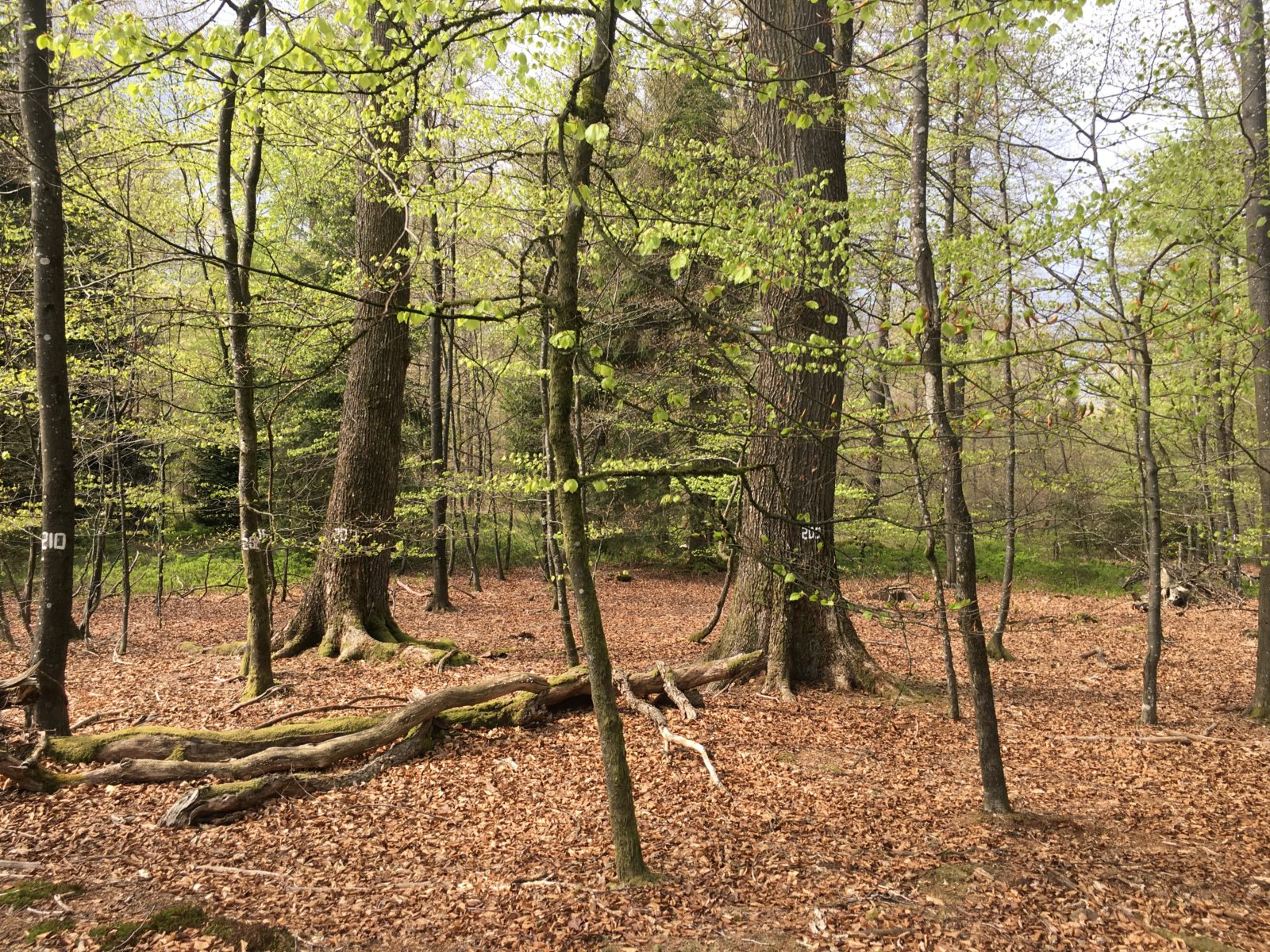

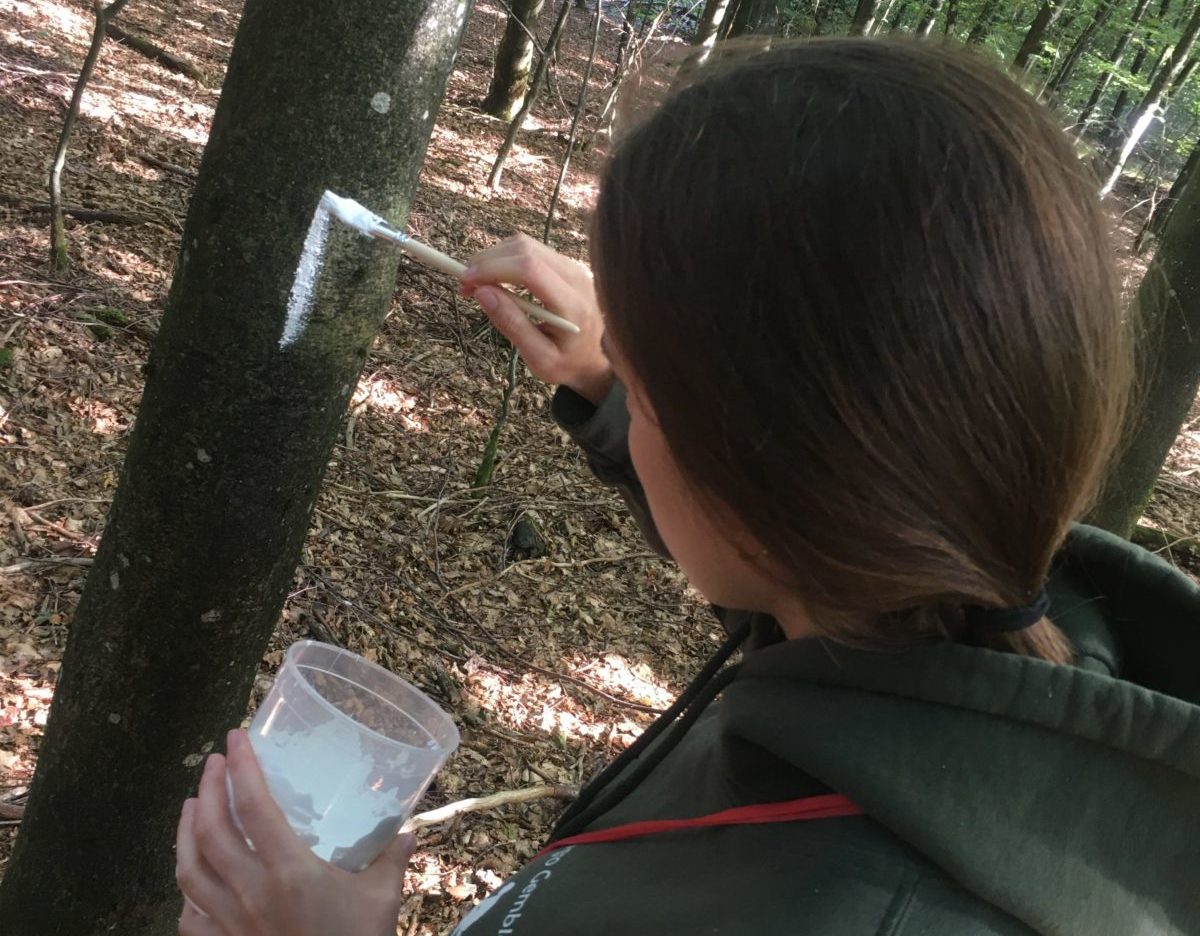
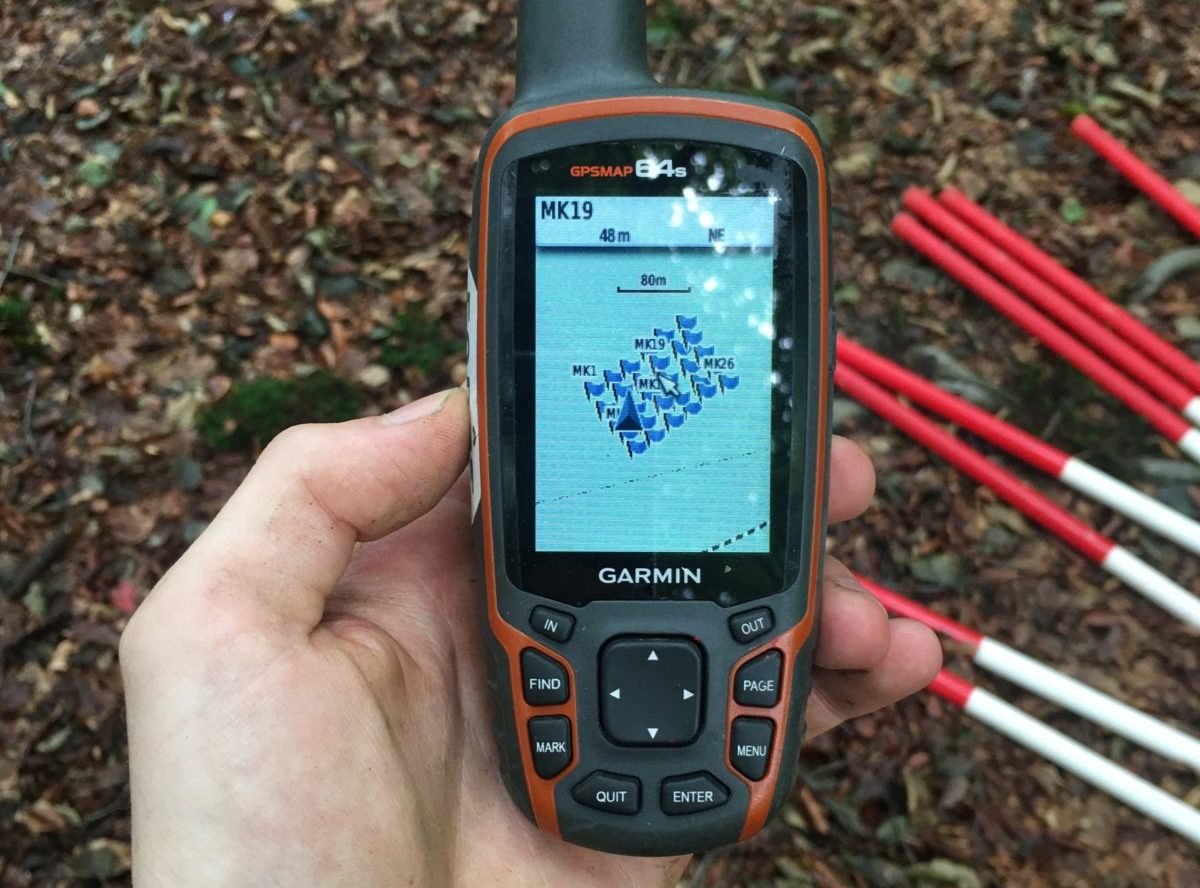
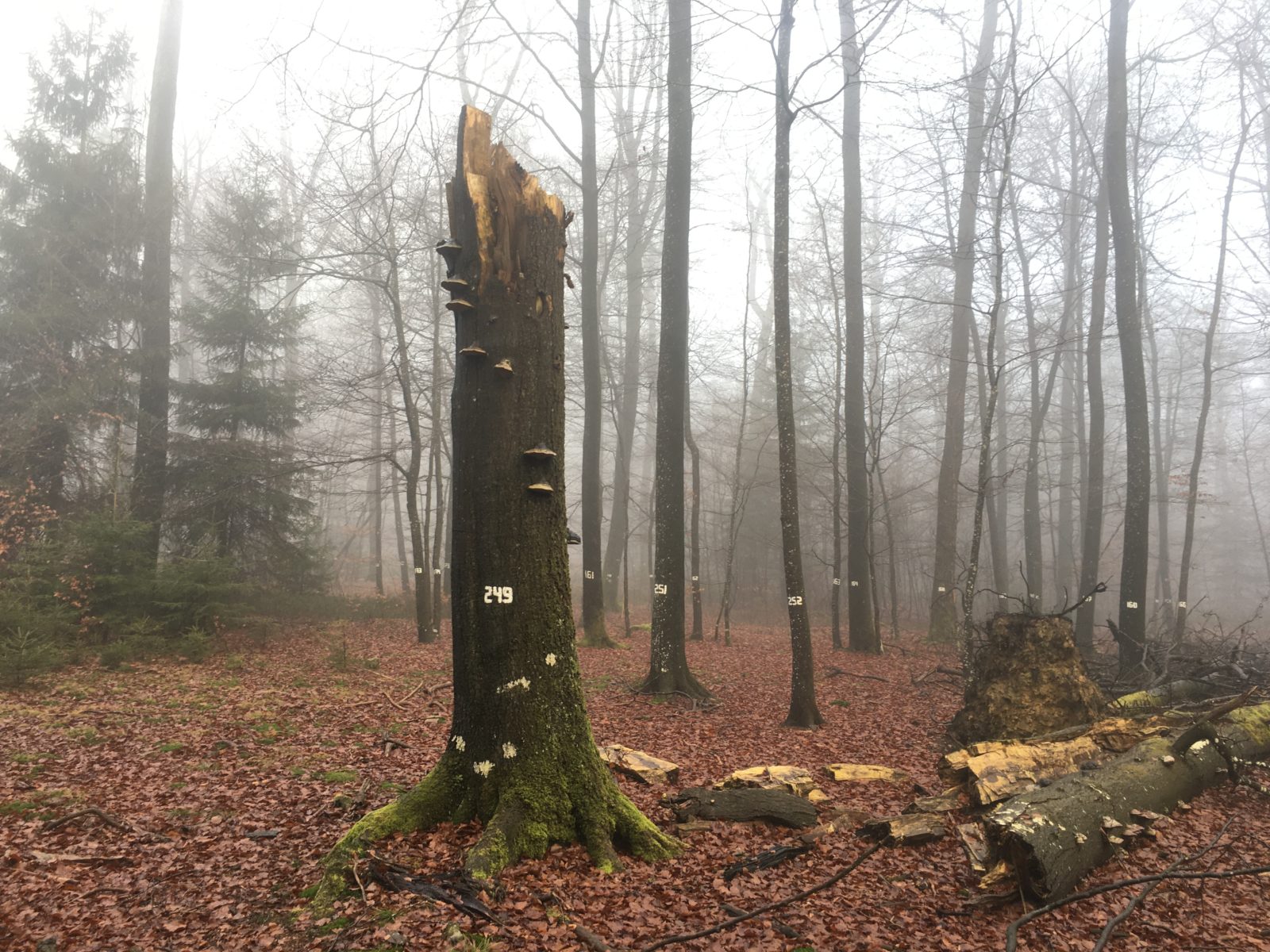
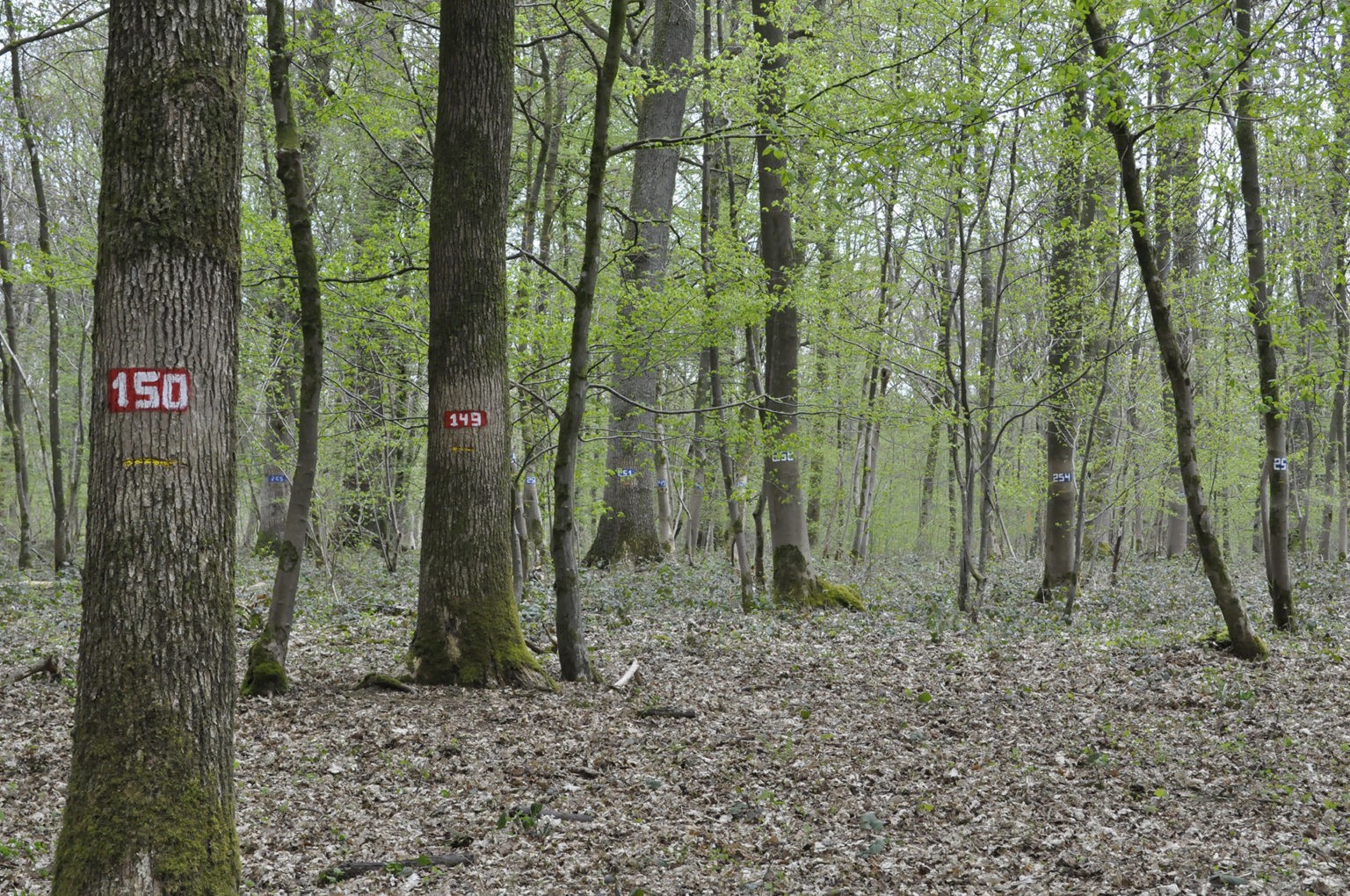

Travailloscope
A travailloscope is an educational tool designed to help people adopt good practice in forestry work and to help foresters understand the real costs of each task and the impact it can have on the forest ecosystem. The tool enables simulated choices to be made, analysed and compared on an objective basis allowing for team debate.
How do you reduce the impact of forestry work on the environment while limiting its cost? This becomes possible with a detailed and hands-on knowledge of “targeted” forestry work.
To this end, travailloscopes are essential educational tools that allow managers to practice and acquire the knowledge that is indispensable for managers.
Our travailloscopes
En octobre 2021, un premier travailloscope a été inauguré en peuplements résineux à Daverdisse. Celui-ci répond amplement aux préoccupations actuelles des forestiers, abordant des situations de blocage et la thématique des mélanges sur une zone qui a été mise à blanc pour raison sanitaire (scolytes).
Depuis plusieurs années l’agent de triage donne de plus en plus
de place aux dynamiques naturelles. Le propriétaire, la commune de Rambrouch, soutient cette démarche pour
tendre vers une sylviculture mélangée à couvert continu.
La régénération naturelle est abondante sur la zone du
travailloscope malgré une densité de grande faune élevée
(chevreuil, cerf, sanglier). En effet, de nombreux dégâts
sont visibles sur le terrain (abroutissement, frottis).
Ce dispositif aborde la thématique parfois complexe des travaux forestiers. En effet, au vu du contexte actuel de nombreux forestiers sont à la recherche d’alternatives pour diminuer les investissements liés au renouvellement forestier. Le travailloscope de Grimbiémont se concentre sur le mélange d’essences, la limitation des coûts, la colonisation du sol, les moments clés d’intervention et les semis utiles.
En octobre 2021, un premier travailloscope a été inauguré en peuplements résineux à Daverdisse. Celui-ci répond amplement aux préoccupations actuelles des forestiers, abordant des situations de blocage et la thématique des mélanges sur une zone qui a été mise à blanc pour raison sanitaire (scolytes).
Depuis plusieurs années l’agent de triage donne de plus en plus
de place aux dynamiques naturelles. Le propriétaire, la commune de Rambrouch, soutient cette démarche pour
tendre vers une sylviculture mélangée à couvert continu.
La régénération naturelle est abondante sur la zone du
travailloscope malgré une densité de grande faune élevée
(chevreuil, cerf, sanglier). En effet, de nombreux dégâts
sont visibles sur le terrain (abroutissement, frottis).
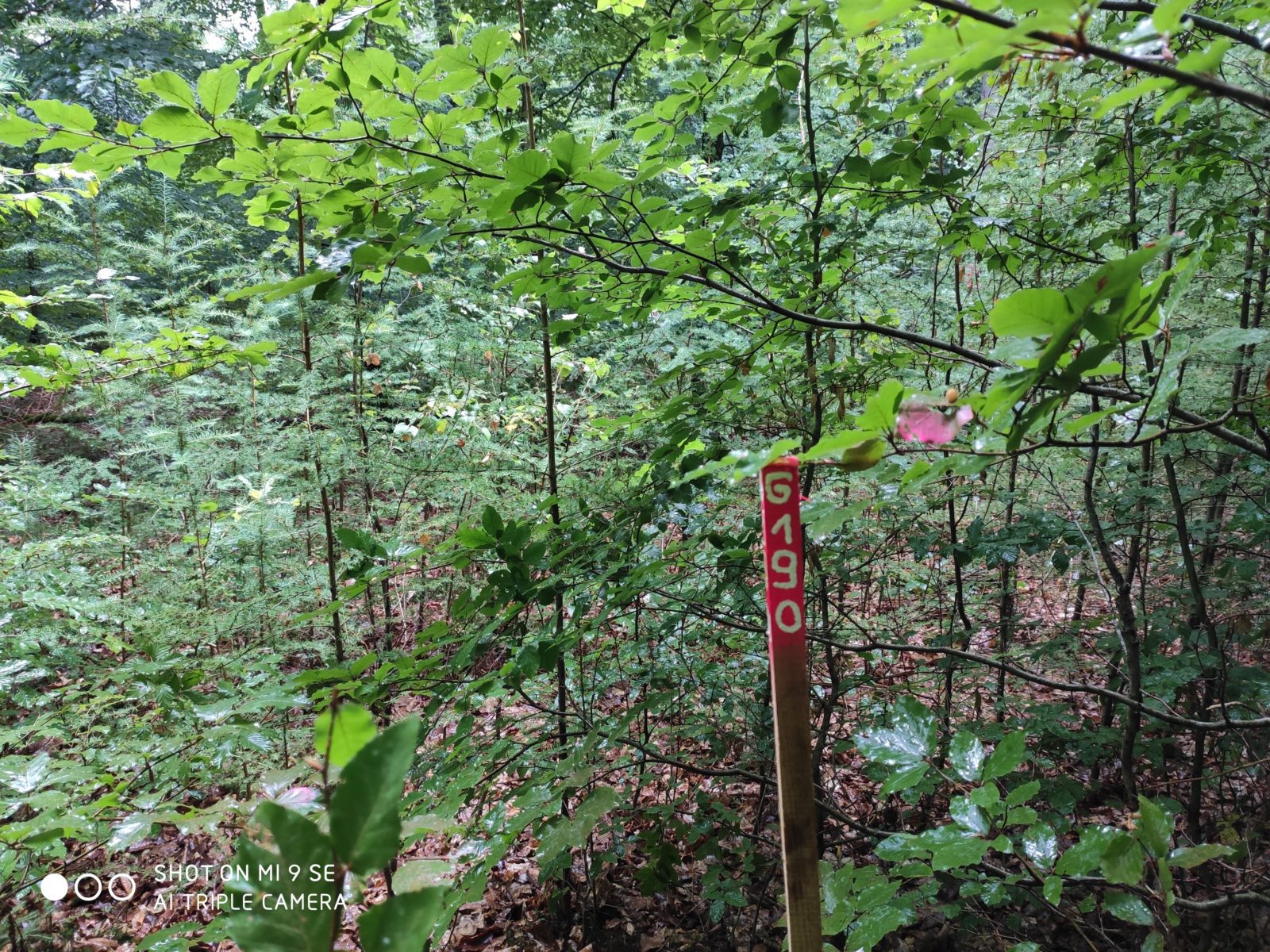
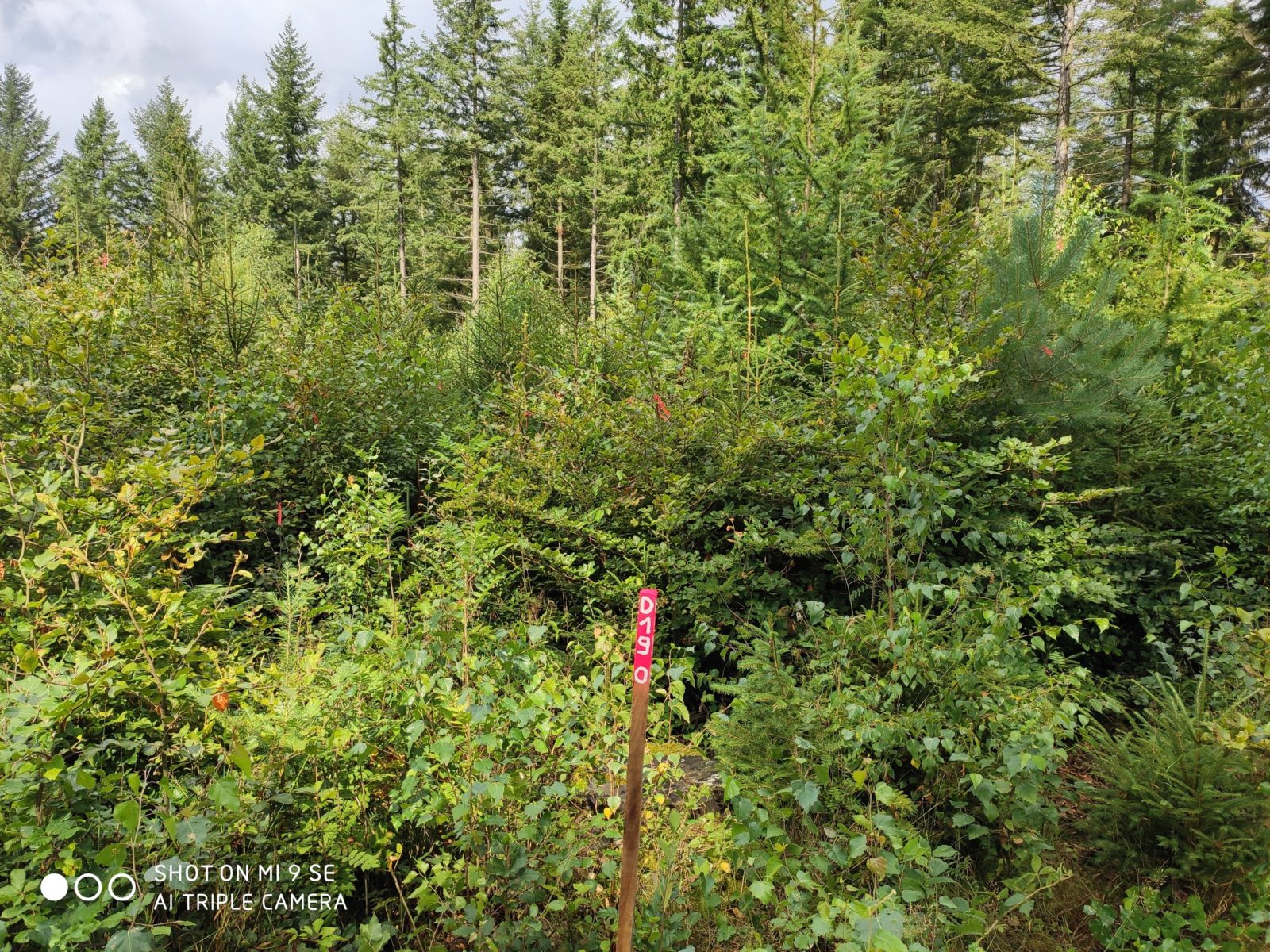
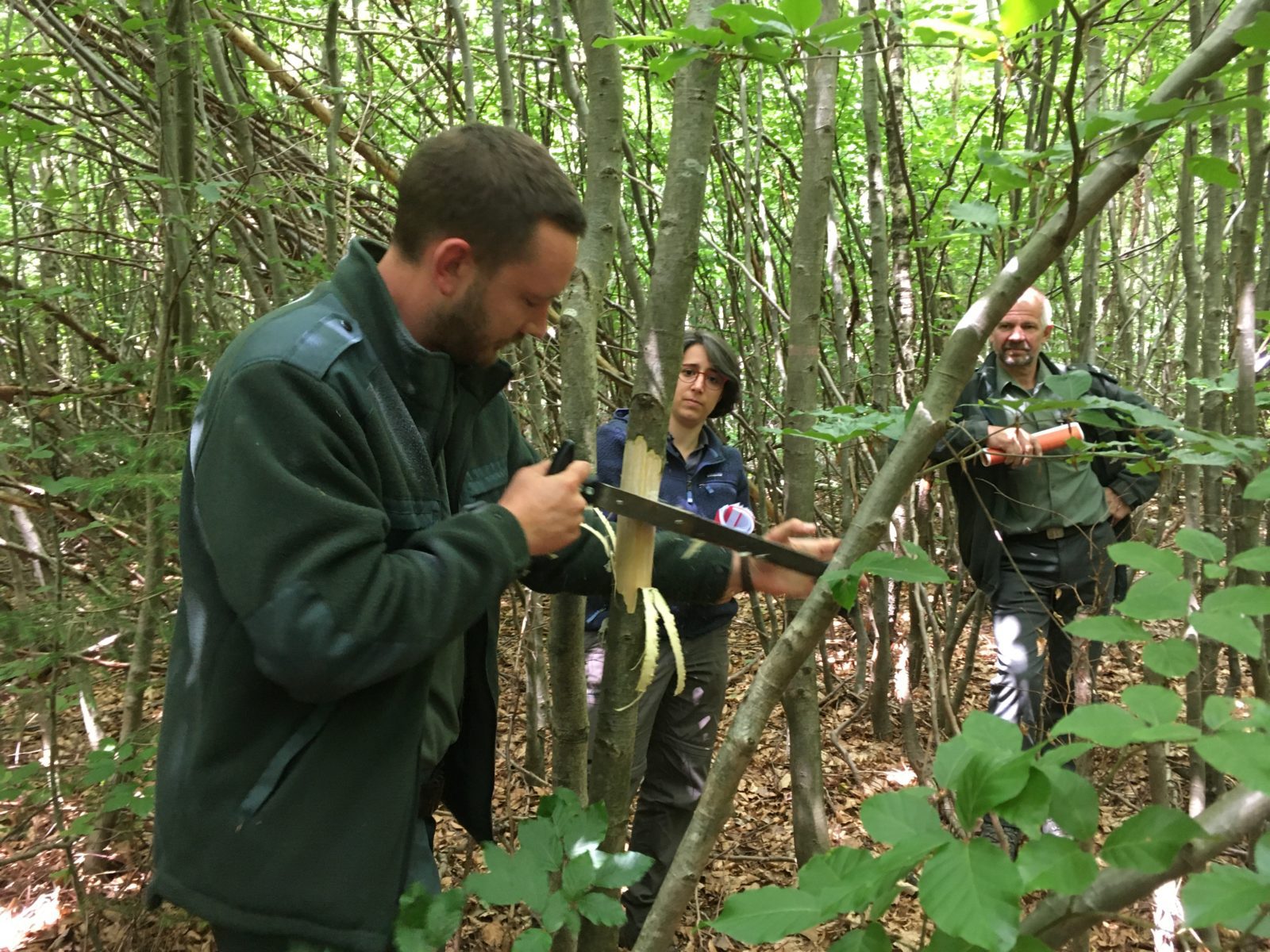
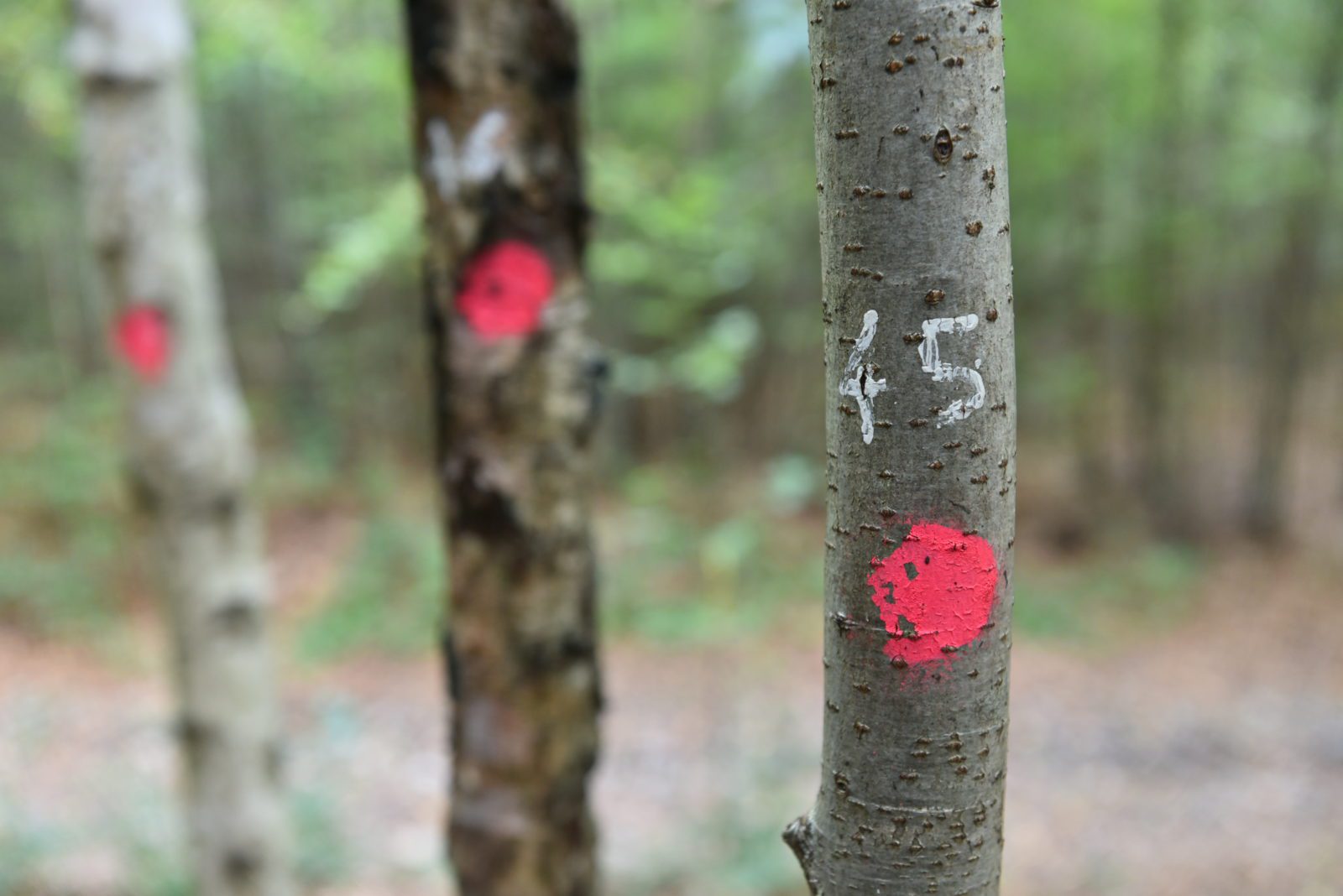
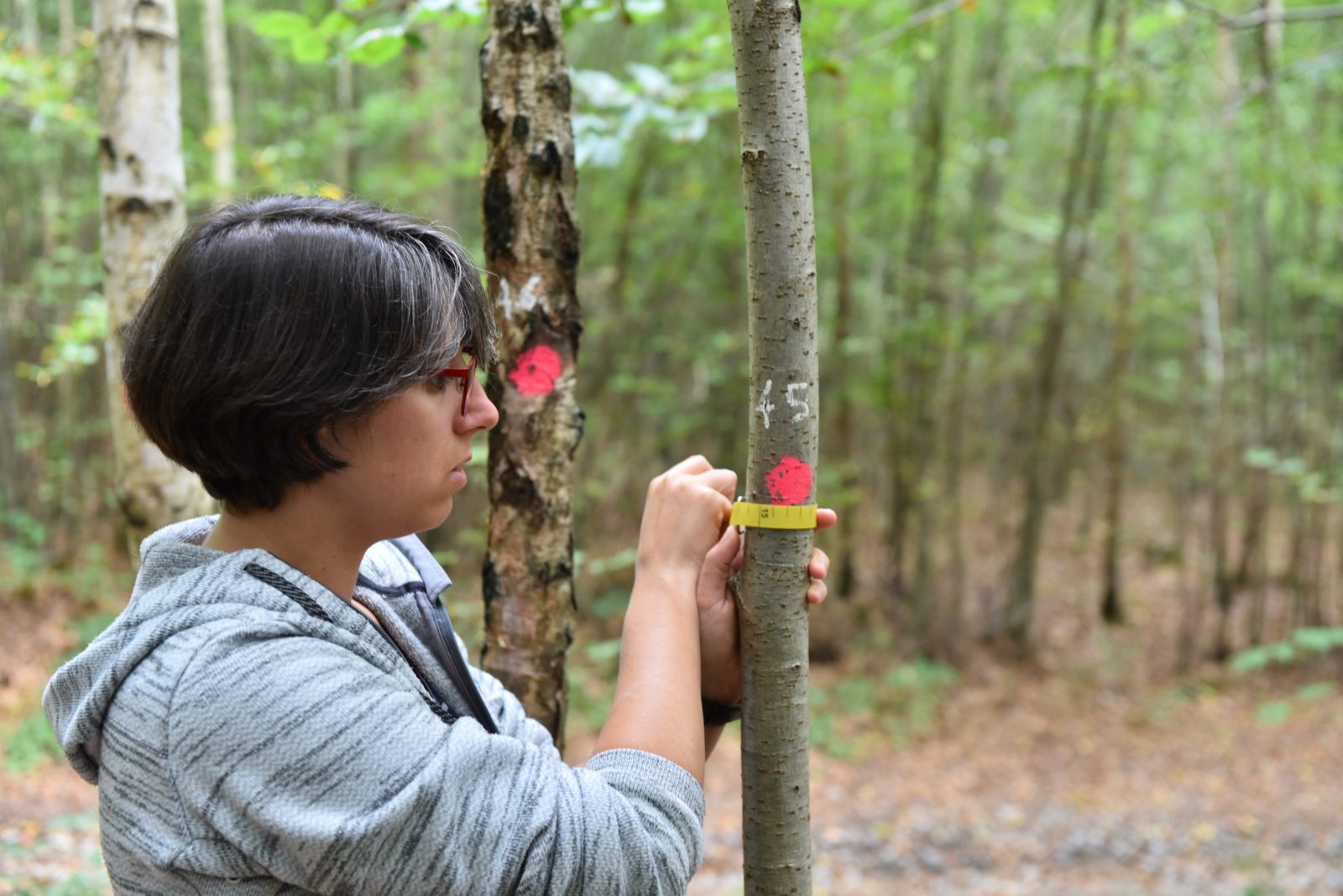
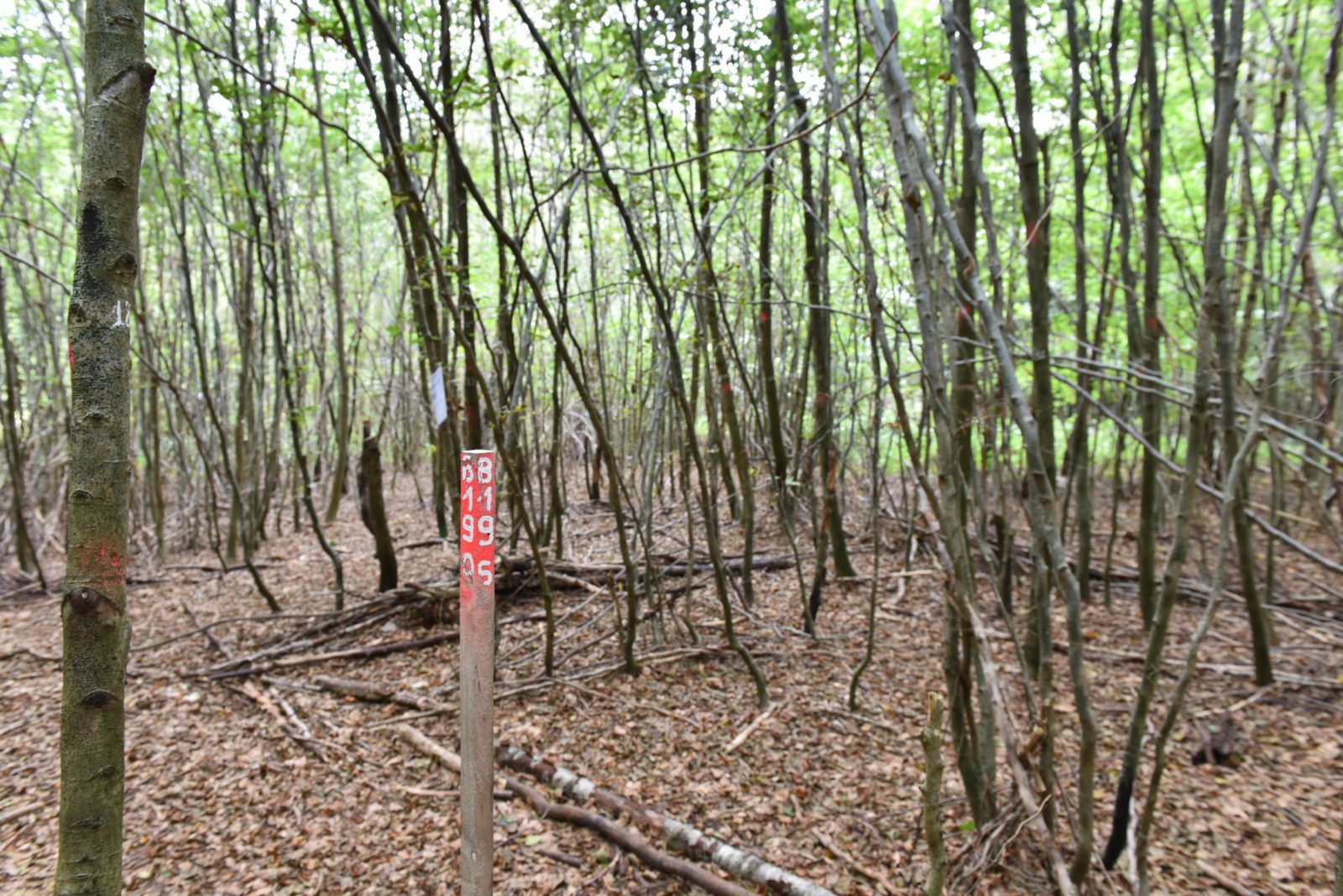
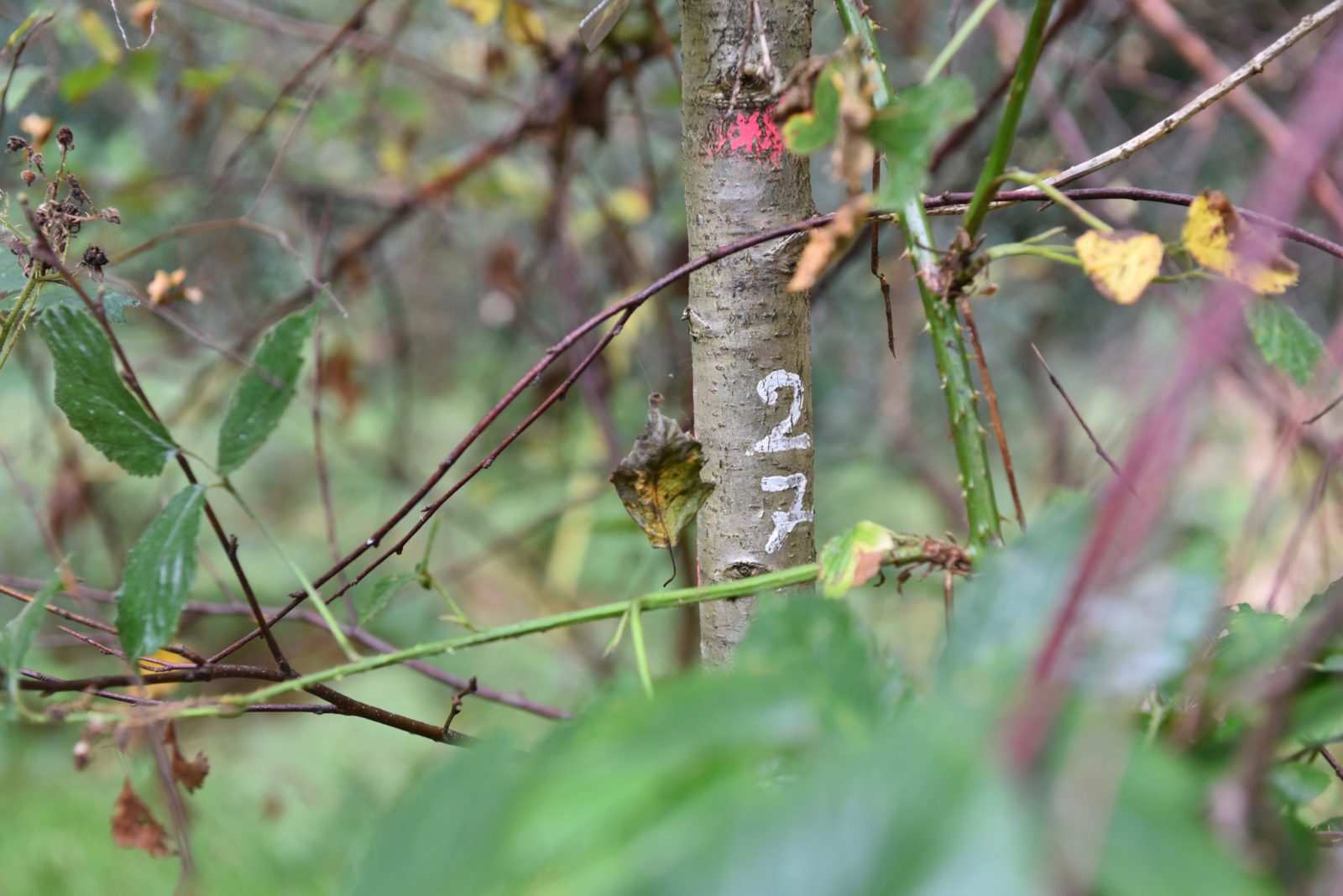
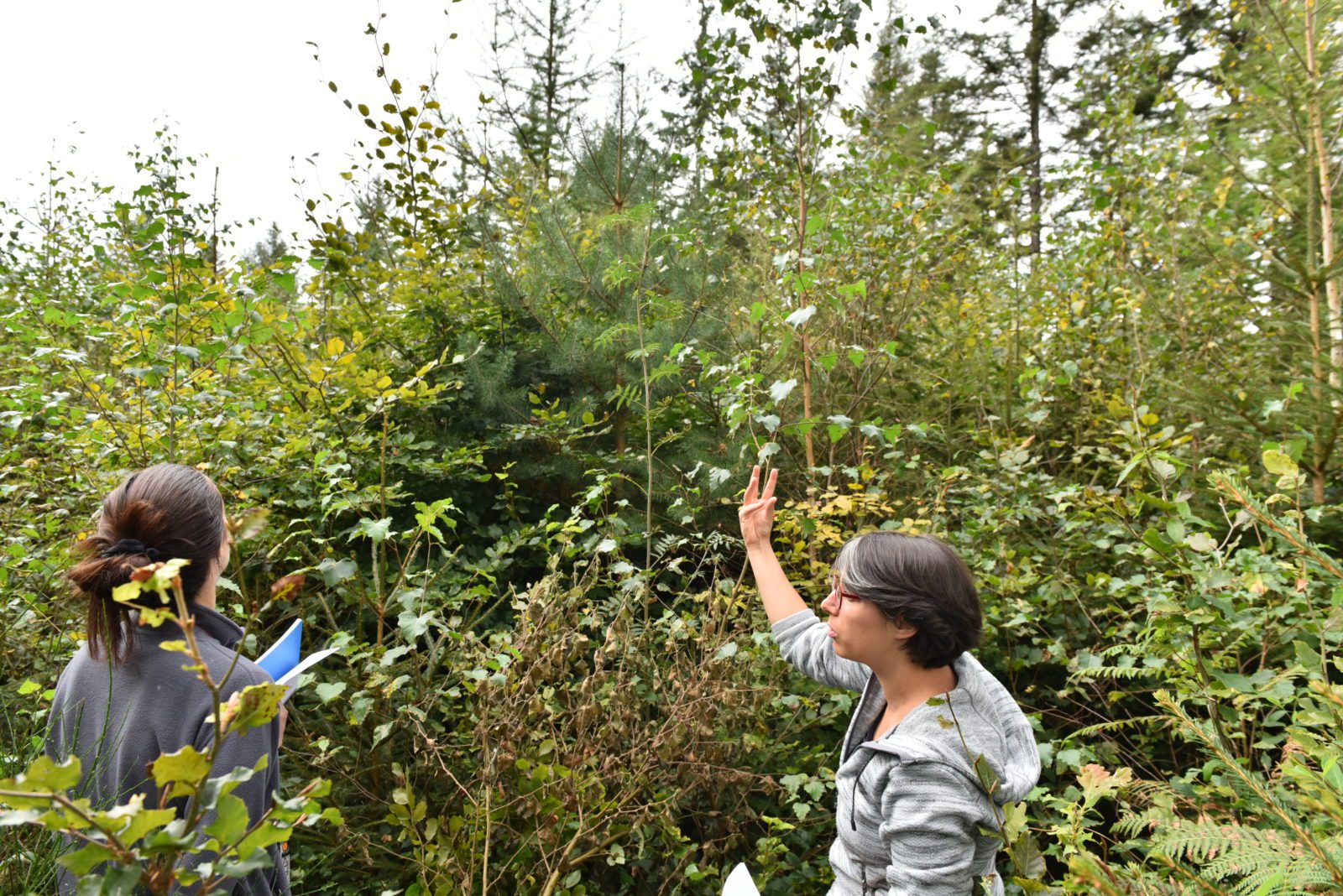
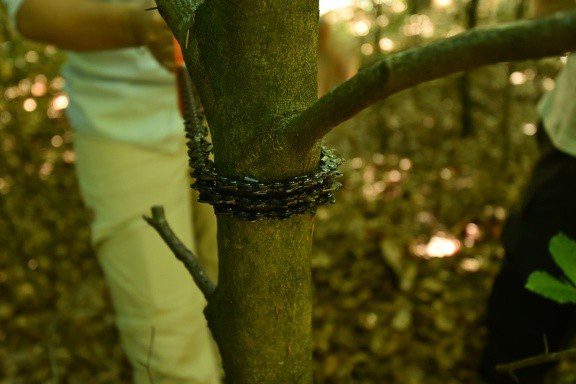
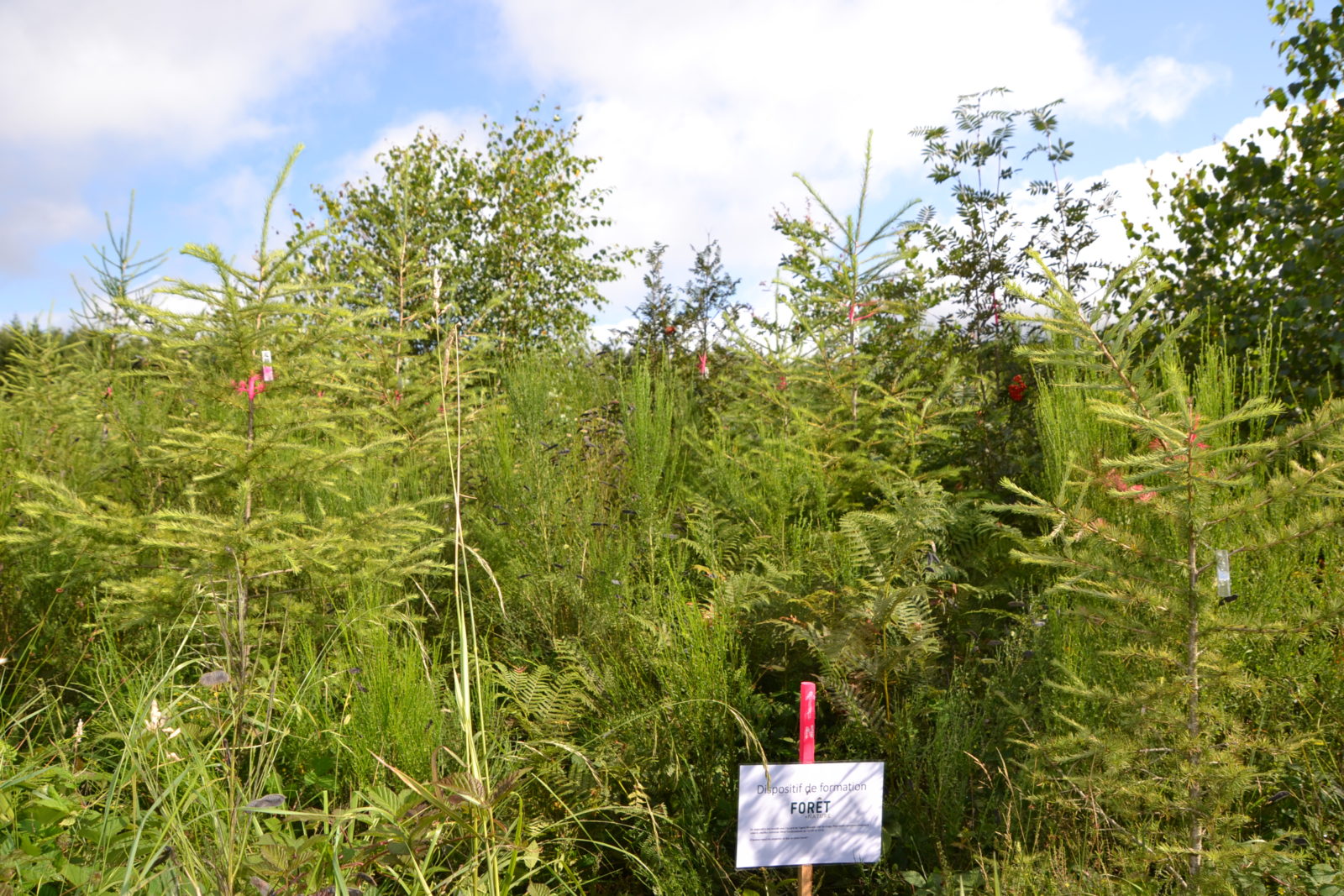
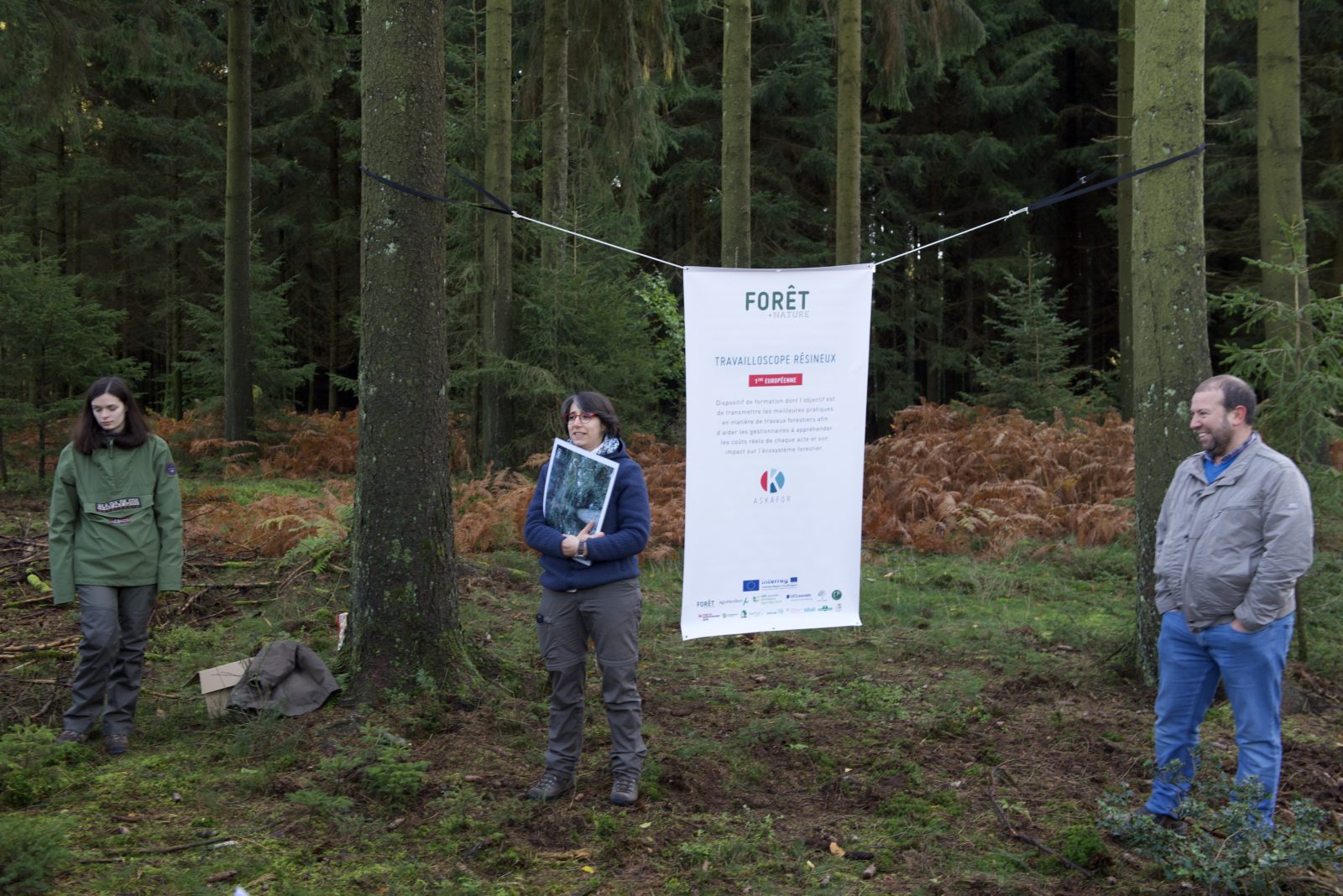
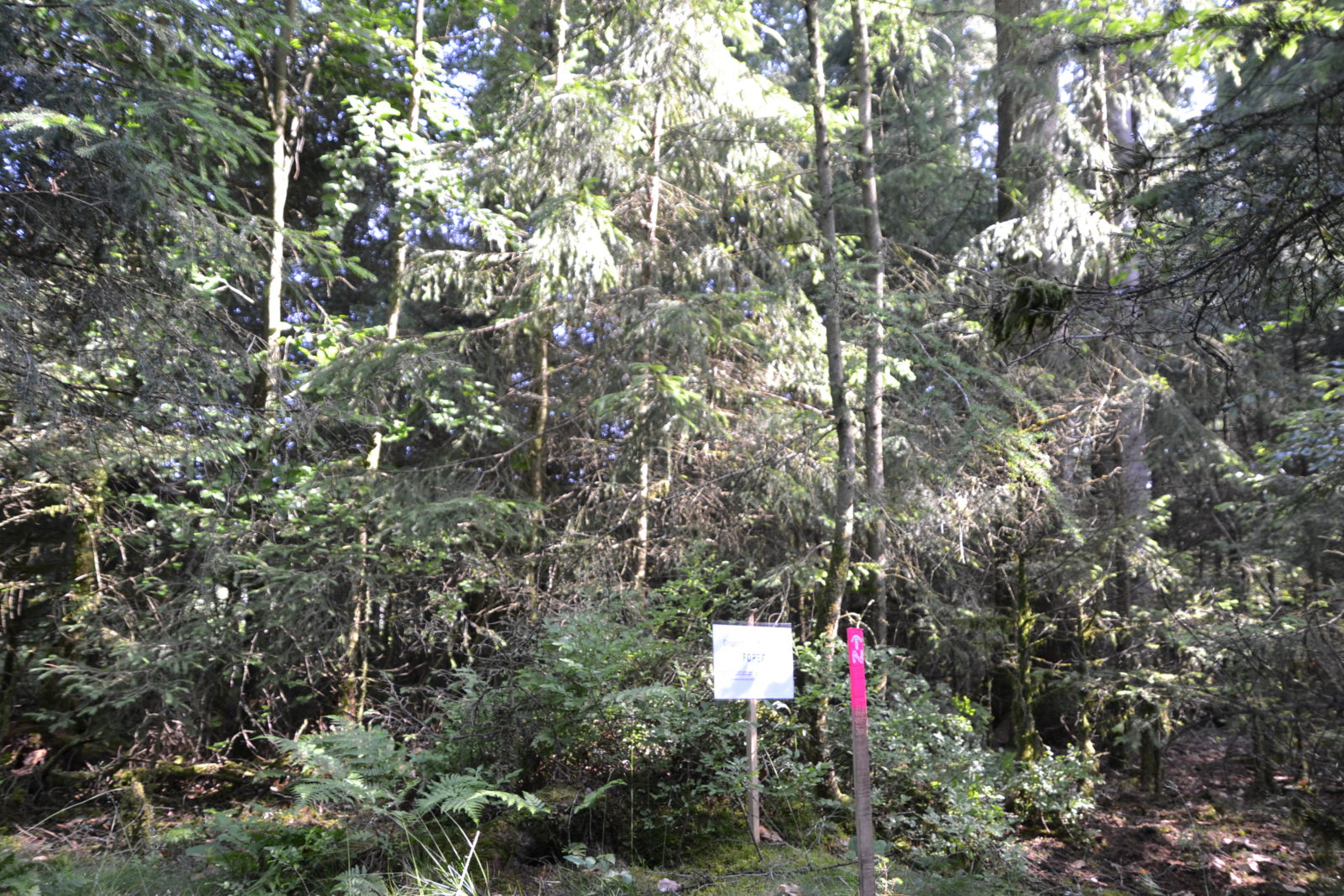
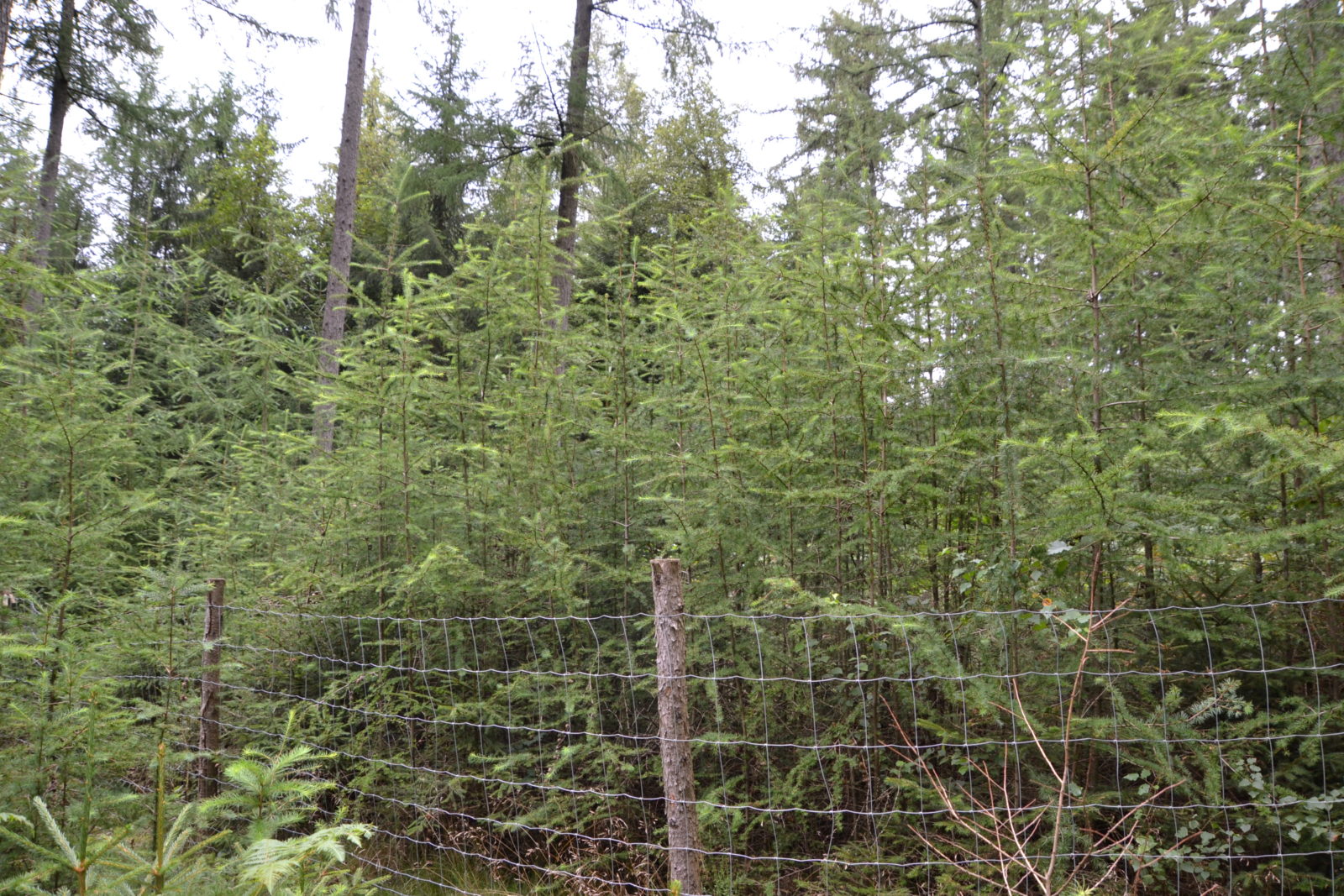
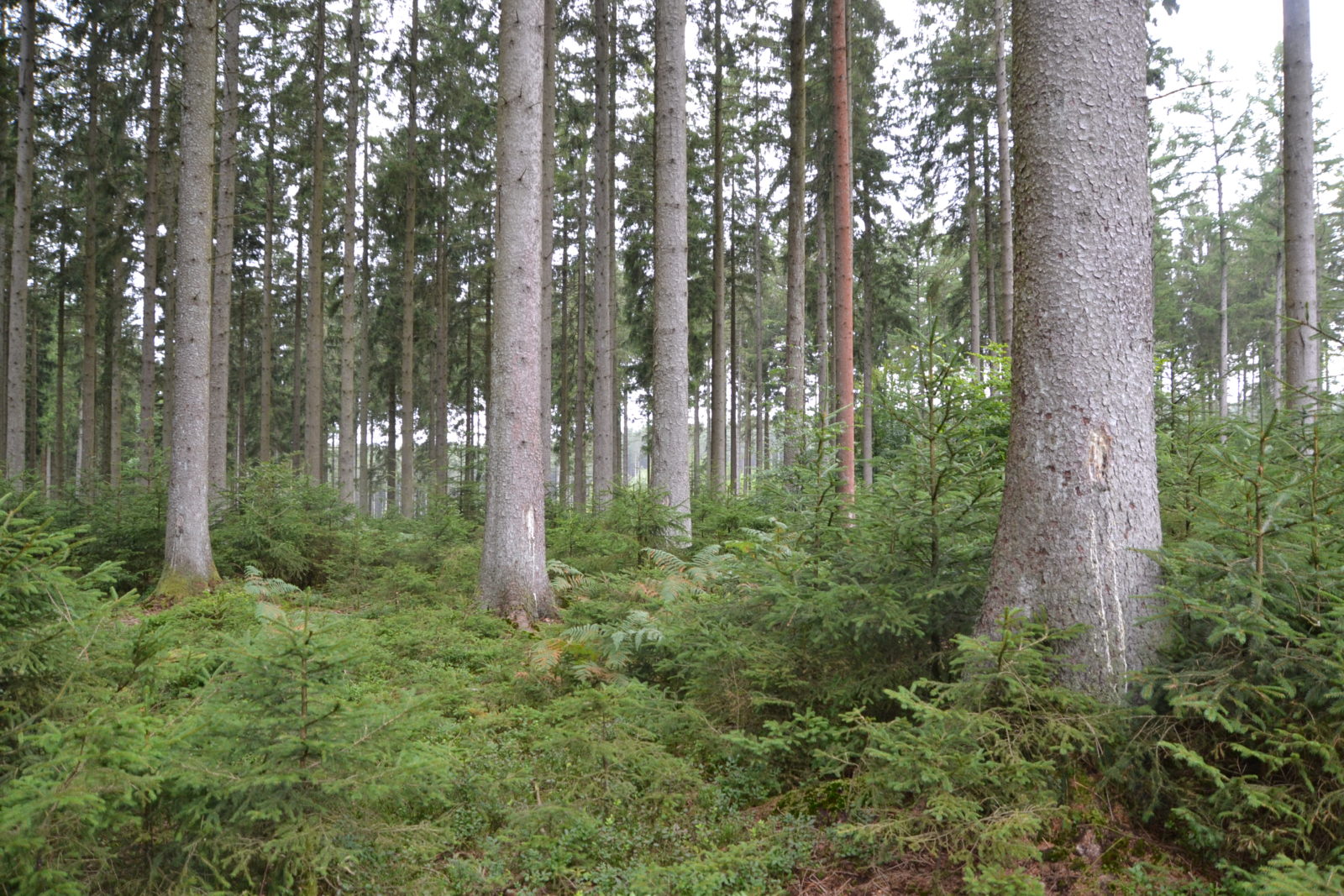

Arbres-objectifs
Dans le cadre du Plan quinquennal de recherches et vulgarisation forestières, Forêt.Nature suit 9 dispositifs expérimentaux en collaboration avec le DNF, l’UCLouvain et l’ULiège. Ces dispositifs ont pour but de mesurer la croissance d’arbres-objectif en hêtre et en chêne qui ont été éclaircis plus ou moins fortement. Quatre modalités de détourage sont appliquées pour évaluer les effets de l’éclaircie sur la croissance des troncs et des houppiers, la croissance en hauteur, mais aussi les impacts sur la vigueur des arbres tant ceux ayant bénéficié du détourage que leurs concurrents. Chaque année et depuis près de 20 ans, quelque 450 arbres sont mesurés et plus de 120.000 données ont été récoltées.
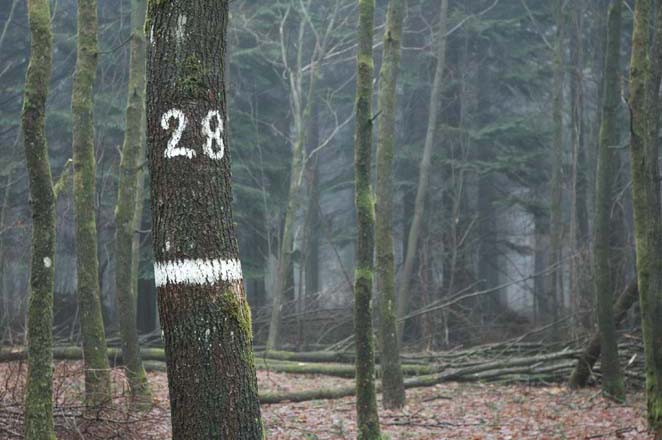
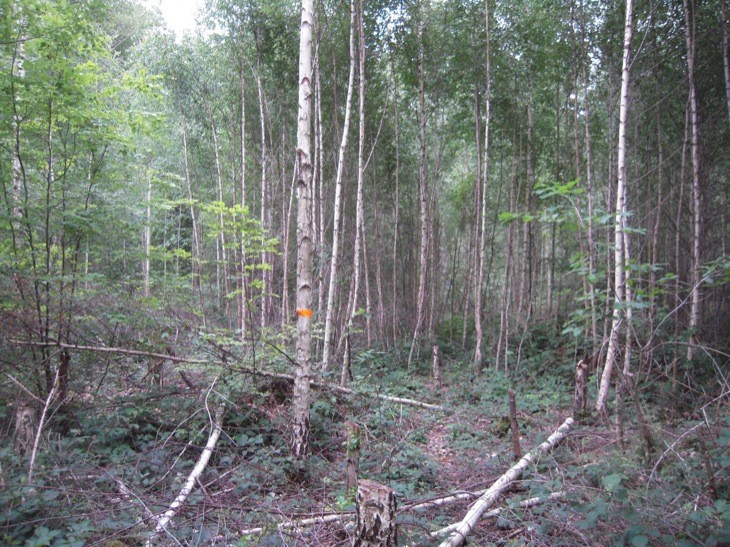
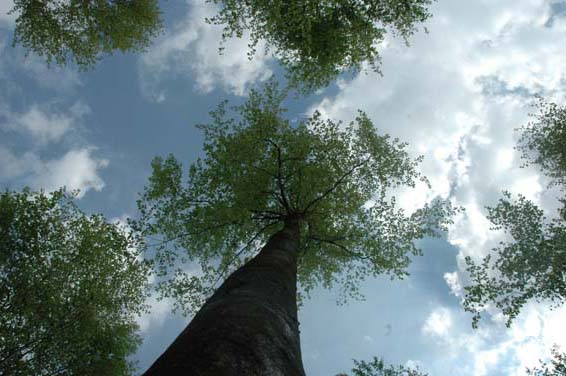
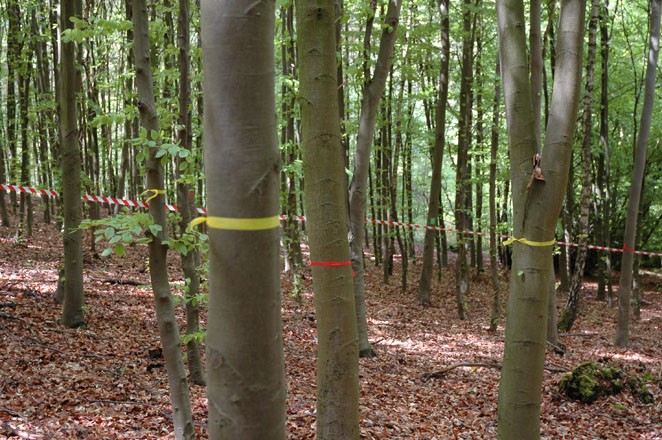
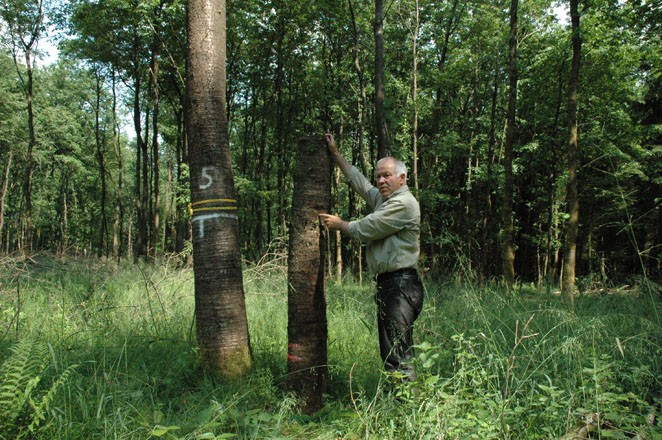
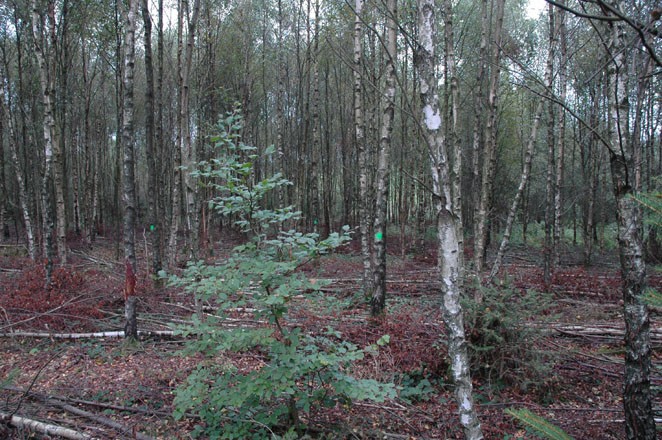
Edgeoscope.
Our edgeoscope
Nassogne
Assesse



Indicator species of flora
We have 8 different routes to correspond to various different contexts encountered by forest officers.
These routes are designed for you to encounter several different stations, which can be analysed and interpreted using a floristic list. For example:
- Station 1: flat area without any specific constraints
- Station 2: flat area with an alternating water regime constraint
- Station 3: sloping site facing south
- Station 4: flood plain site, located next to a river
- Station 5: sloping site facing north
Routes have been set up in the municipalities of Saint-Vith, Spa, Namur, Rochefort, Saint-Hubert, Mons, Viroinval and Virton.
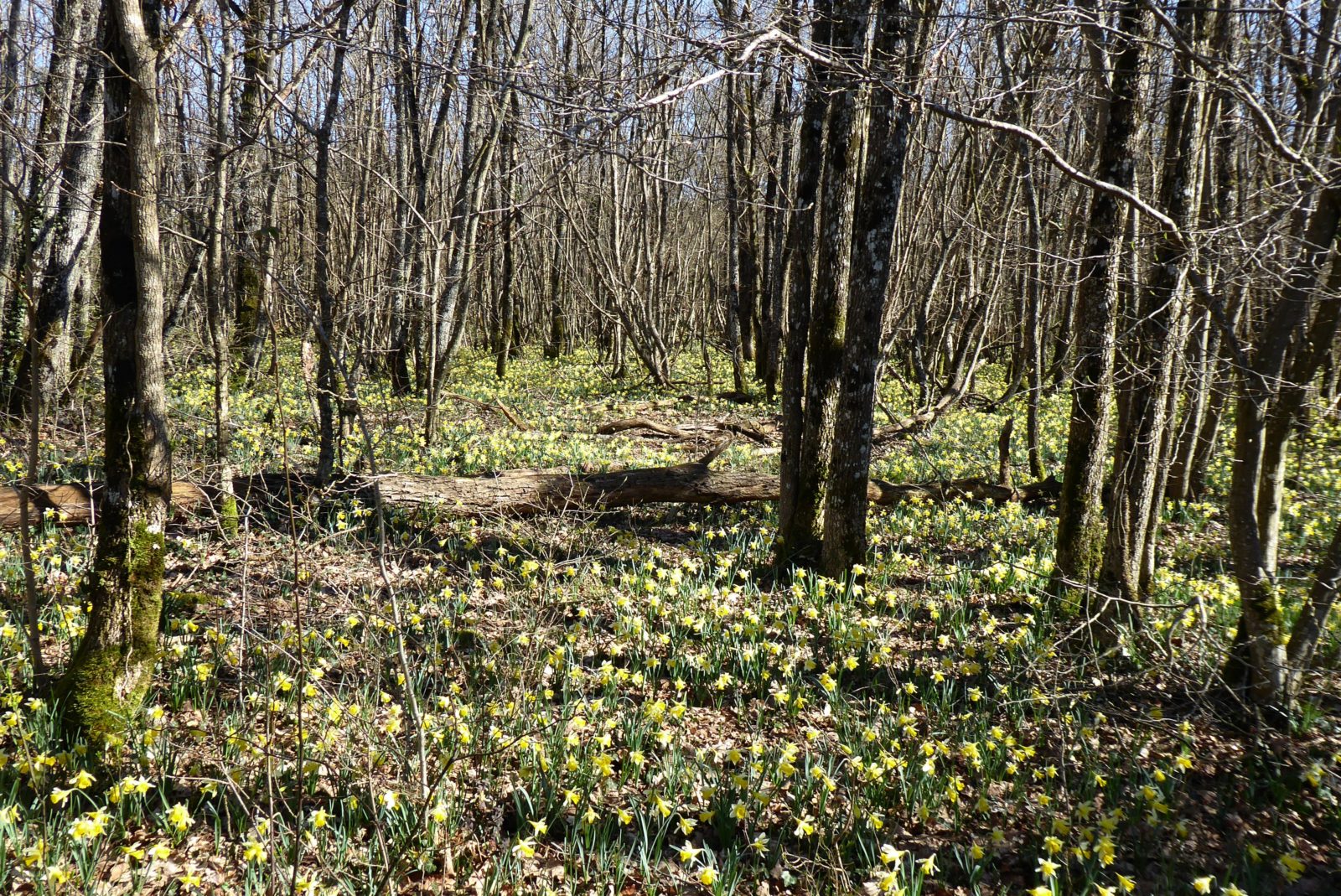
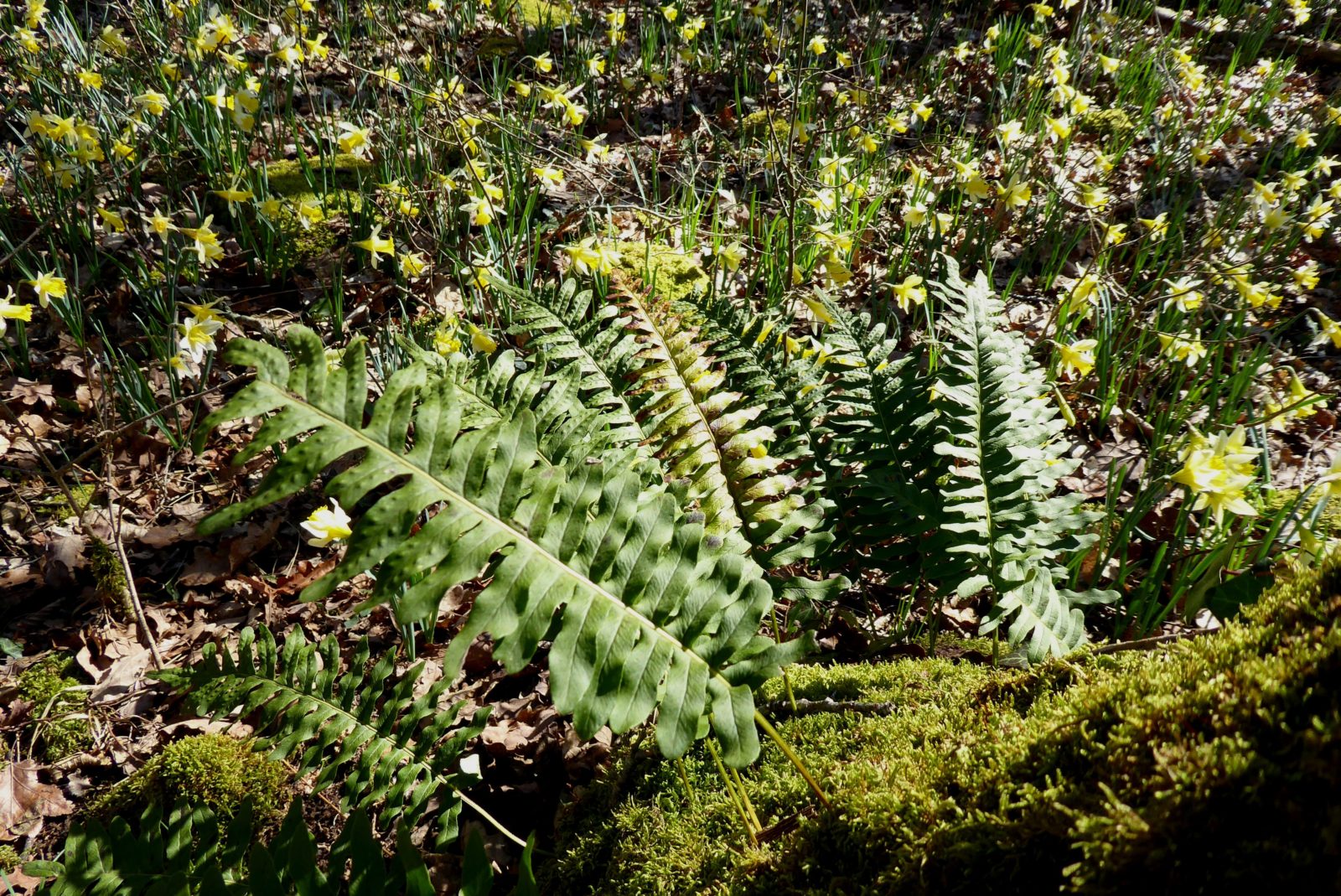
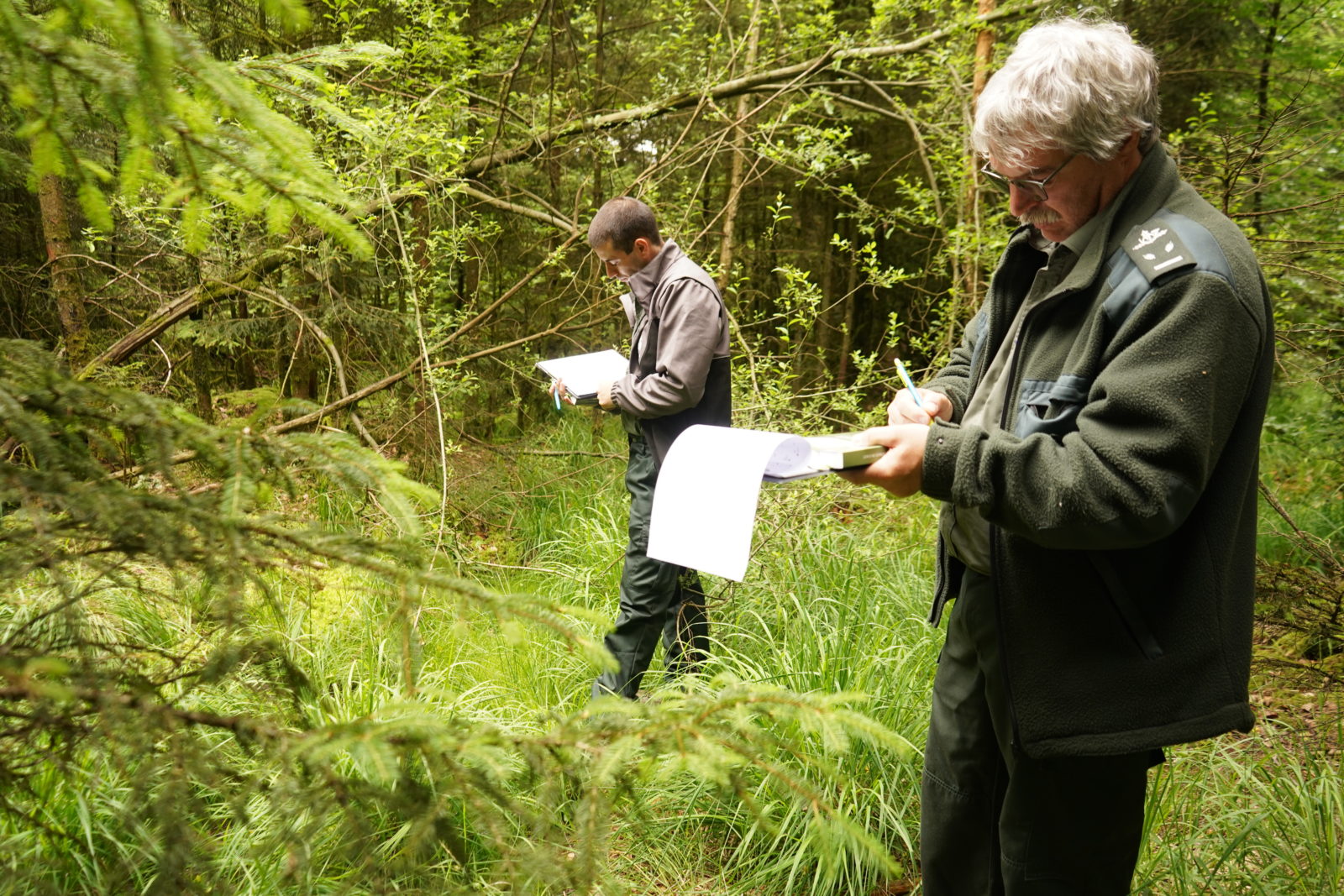
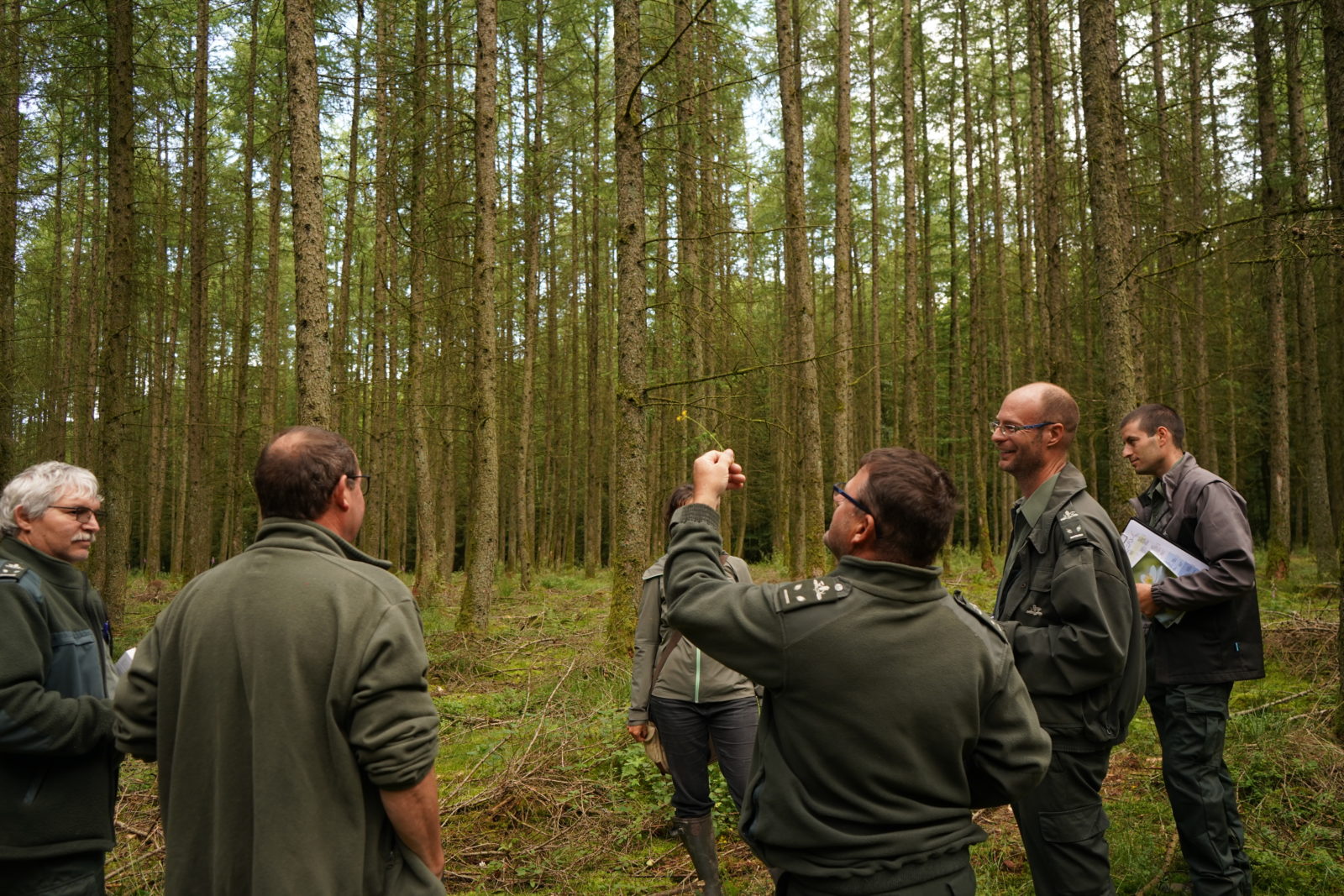
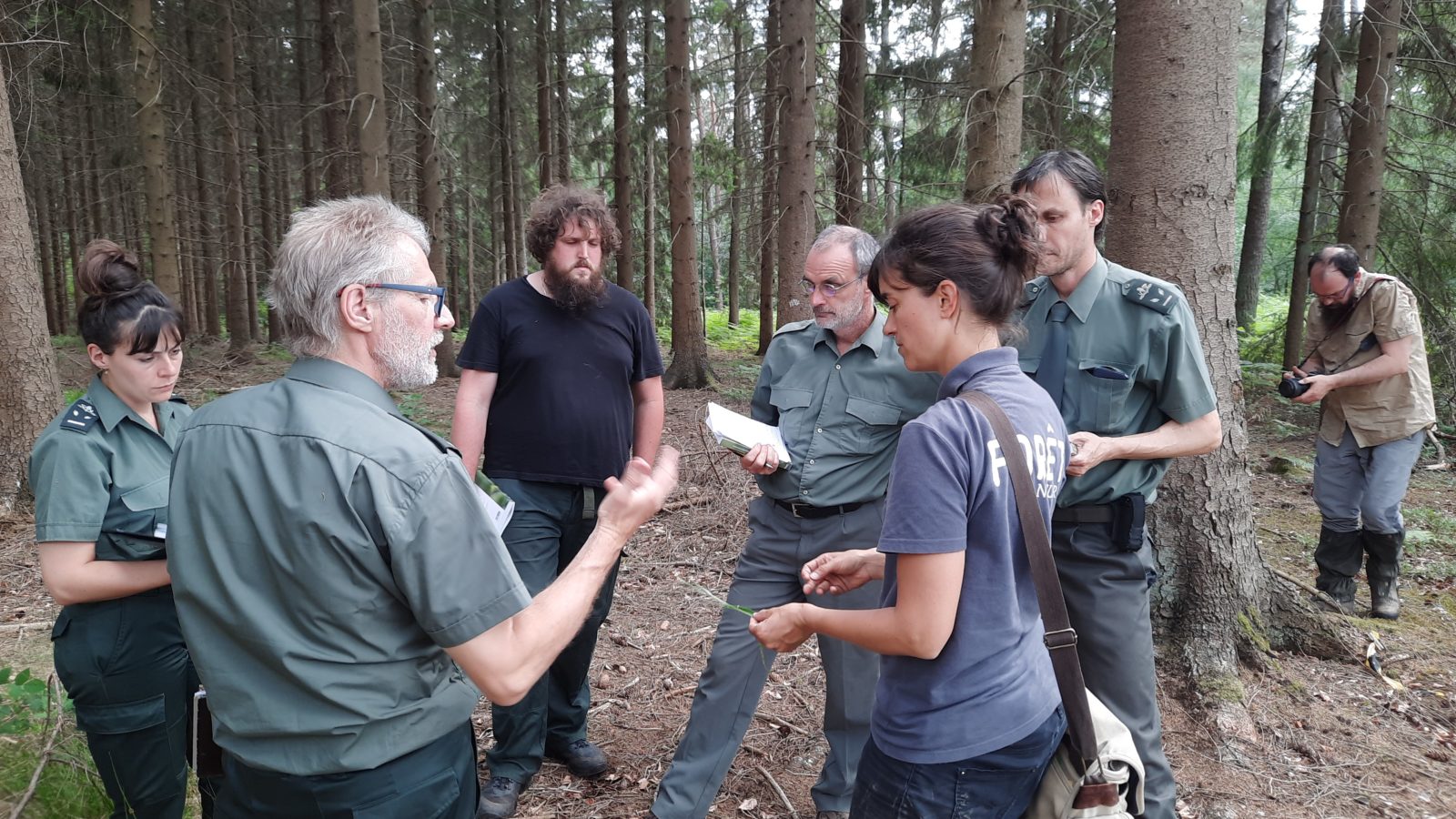
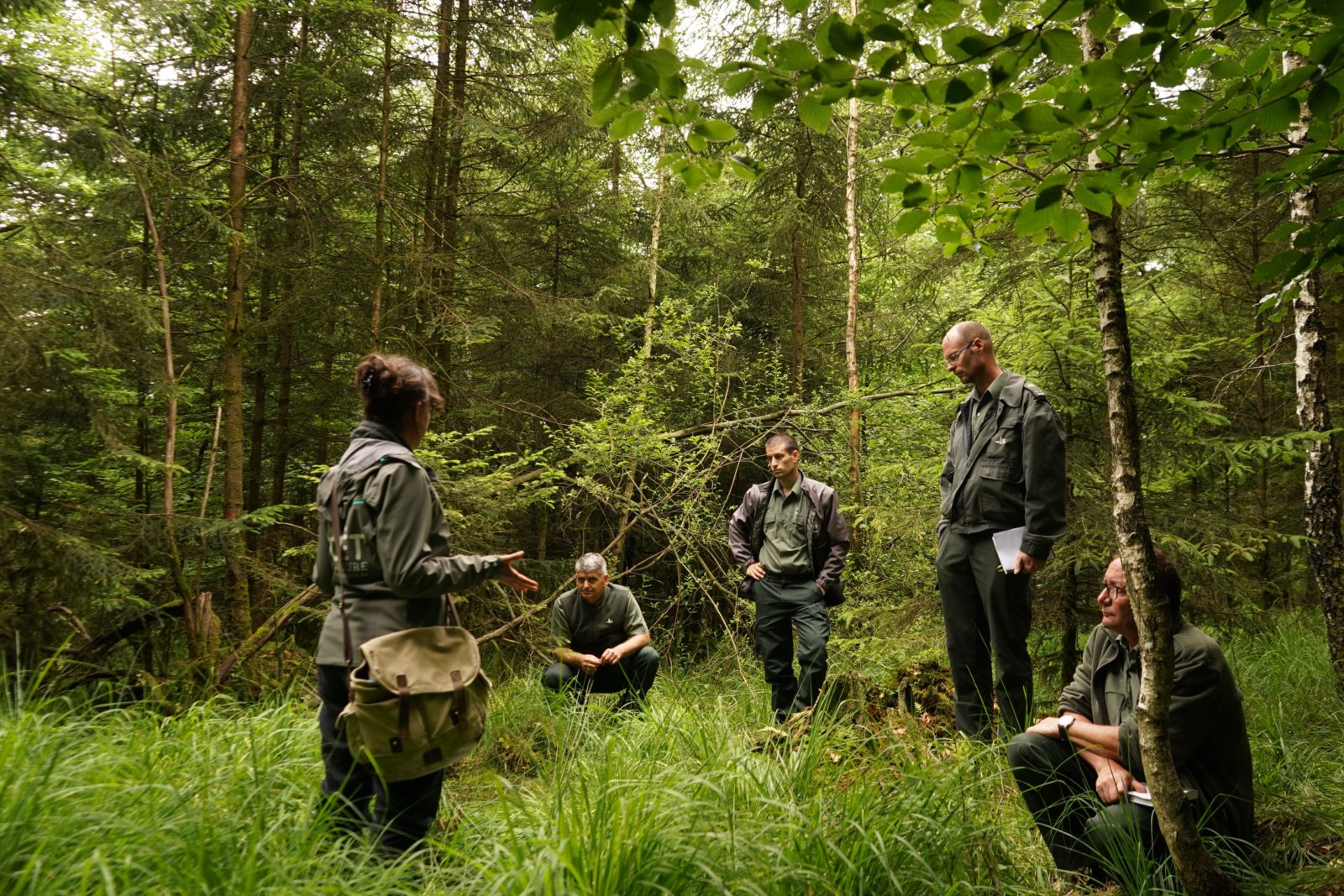
Wood quality
The tool involves a route dedicated to the observation of standing trees, in order to sharpen the eye to be able to “read the bark” and identify shape defects. After learning to spot the different defects and peculiarities, participants examine the 11 numbered trees in small groups or alone. They assess their quality, identify defects and evaluate the possible uses of the log. Afterwards, these trees are examined as a whole group as part of a debriefing to update knowledge and experiences.
The next step focuses on observing the impact that the defects identified on the bark have on the wood, in particular using specially sawn logs to expose the defects. Around ten logs have been sawn into pieces. Each piece is examined to understand the effects of the defects on potential usage.
Finally, the “Guided Tour of the Parc à Grumes” – which brings together a selection of very high quality trees as well as their tops – allows you to observe what is technically and commercially tolerated for specific uses and what poses a problem. “Tree slice defects”, which are not visible at first glance on standing trees, can be examined in this way.

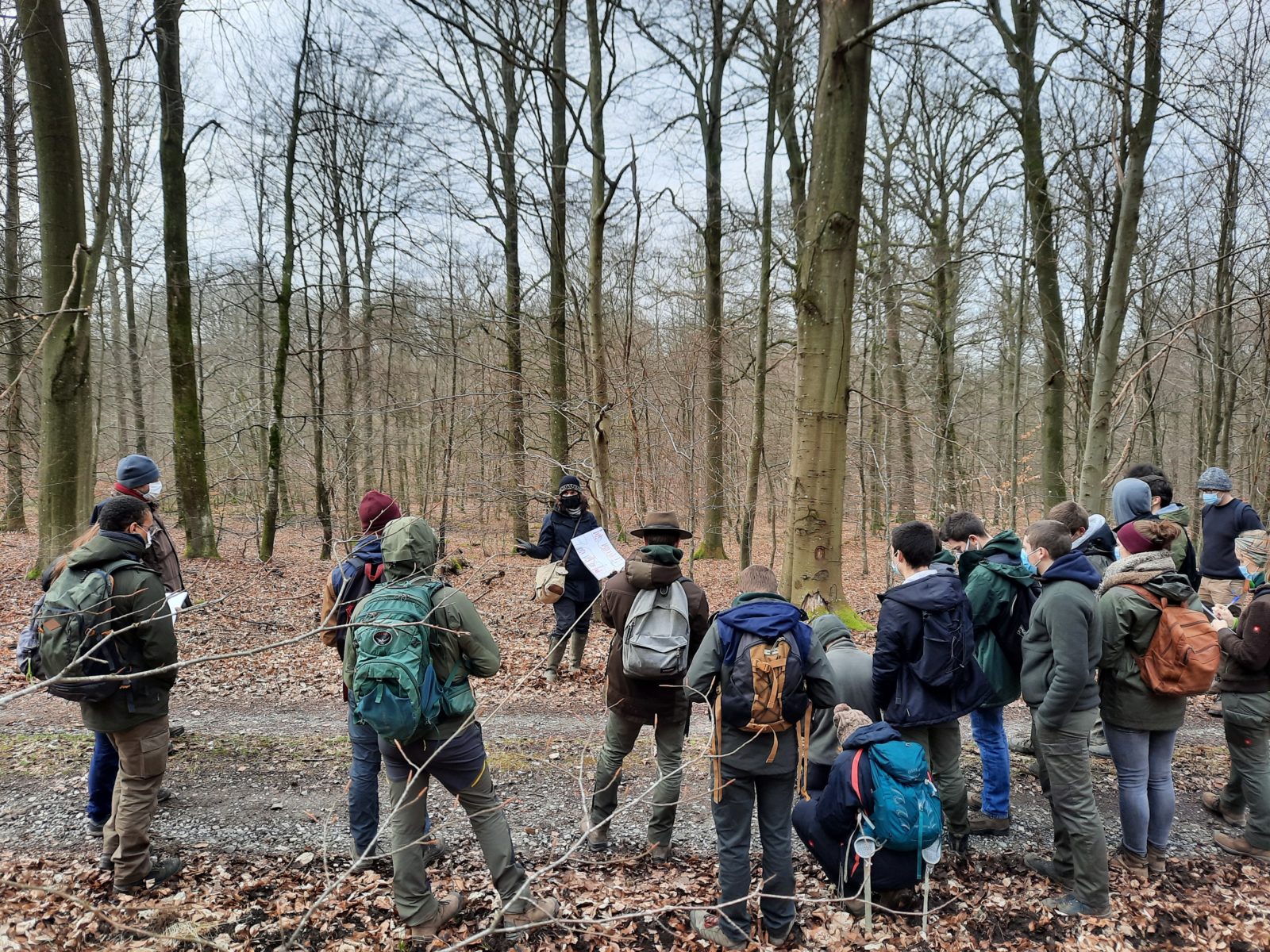
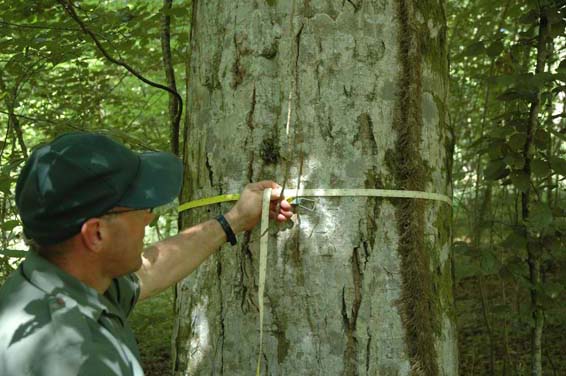

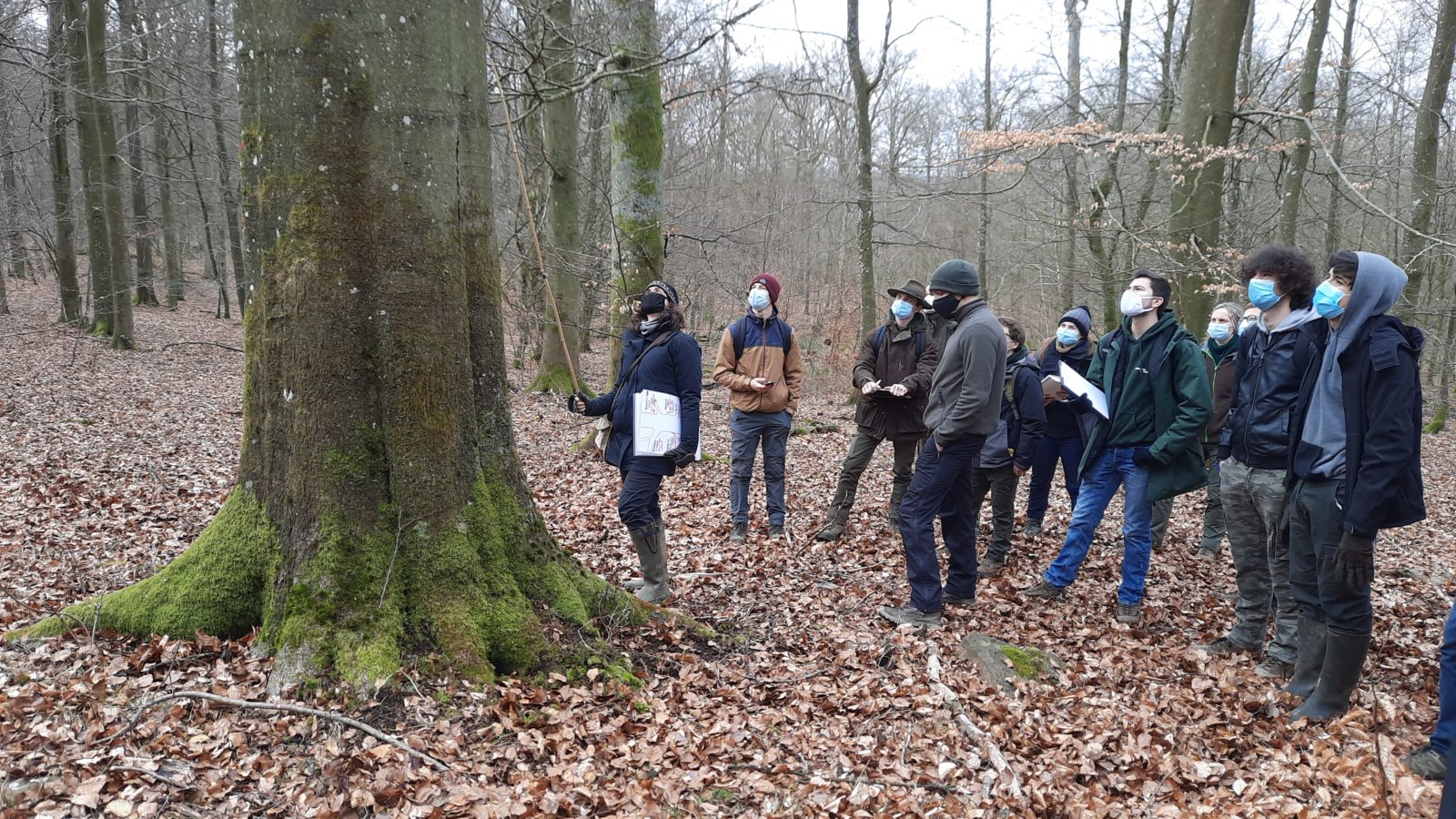
Log yard (parc à grumes)
This in an area that has been specifically designed to showcase the most beautiful logs from Wallonia and facilitates preparation for auction. It serves as a DNF (SPW ARNE) tool that we use as part of our “Wood Quality” and “Guided Tour of the Parc à Grumes de Wallonie” training courses. The log yard auction is organised in a coordinated manner with France, Germany, the Grand Duchy of Luxembourg and Flanders. This joint sale allows potential buyers to be pooled, to have more competition as well as ensuring a greater attractiveness of the lots put up for sale.
The sale at the log yard allows the DNF to promote the use of very high quality logs from public forests. It has several advantages:
- It serves as a showcase to exhibit the quality of Walloon wood and the expertise of DNF officers.
- It provides an opportunity to promote quality wood to specialist buyers.
- It brings together exceptional quality woods in one place and makes access easier for buyers.
- It encourages forestry which promotes the production of quality wood.
The volume of wood up for auction is approximately 300 m3/year, which represents less than 0.1% of the volume of hardwood harvested annually in public forests.
Selling prices are high. In 2022, sessile and pedunculate oaks were sold at an average price of €1,293/m3 (max. price €3,469/m3).
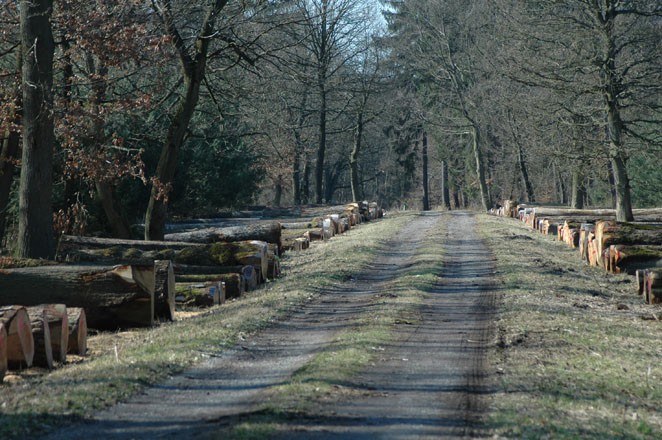
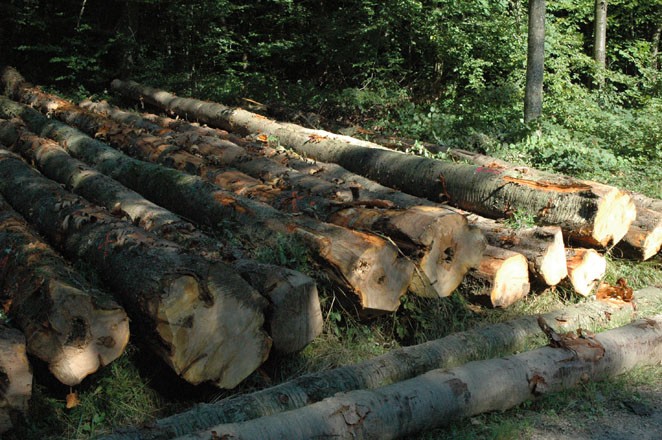
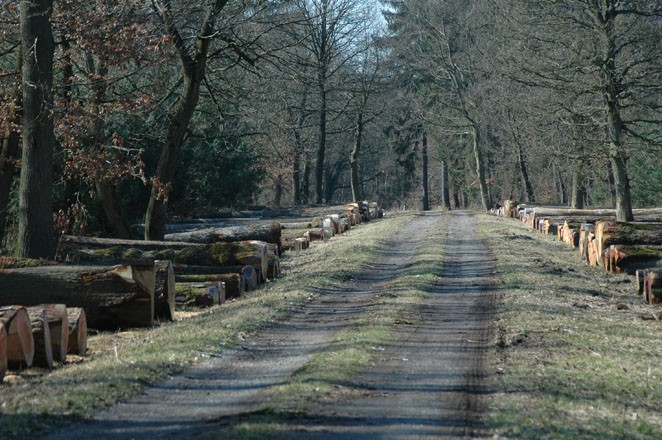
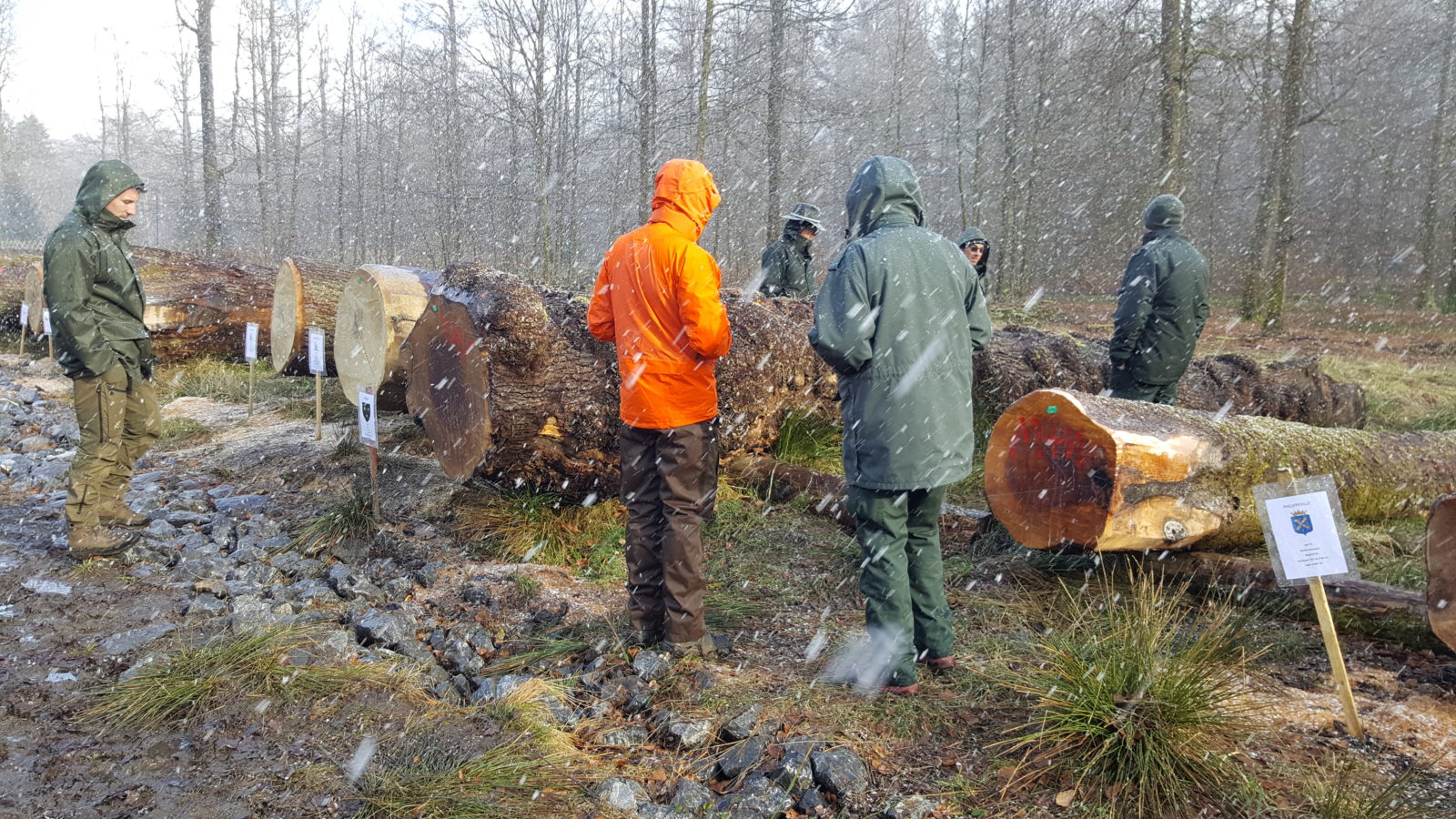
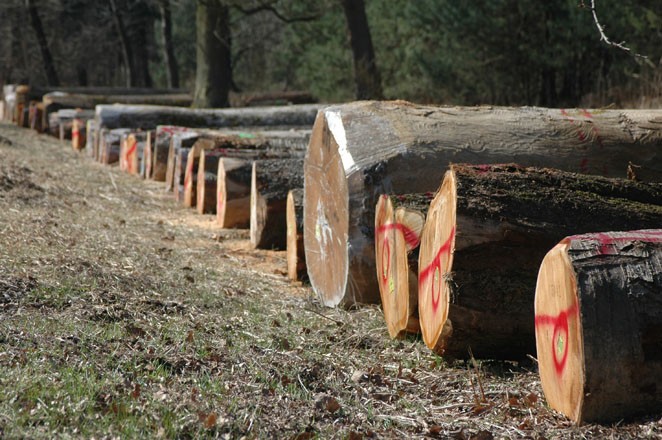
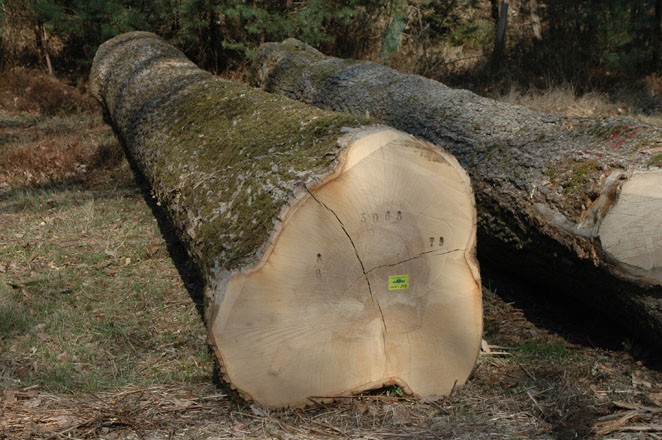
Marteloscope
A marteloscope is a field-based training system that allows the simulated harvesting of trees within a stand in order to analyse and compare on an objective basis that allows for collective debate.
It integrates the economic, environmental and social dimensions of each tree and the ecosystem it constitutes, is instrumental in the training of forest managers and also raises awareness among a less informed public.

Our marteloscopes
Marteloscope de Vecmont (La Roche-en-Ardenne, Belgique)
Mis en place dans une forêt gérée en traitement irrégulier depuis déjà une cinquantaine d’années, ce marteloscope offre un exercice pratique complet du jeune semis jusqu’à l’arbre mature. Il est situé dans une hêtraie-chênaie ardennaise typique sur sols bruns forestiers, où le hêtre domine largement.
L’objectif pédagogique de ce marteloscope est de s’exercer au martelage en hêtraie-chênaie irrégulière. Les professionnels y trouveront les réponses techniques utiles à leurs pratiques de terrain. Augmenter la proportion de chêne dans le mélange est également visé par ce dispositif.
Marteloscope de Bêchefa (Vielsalm)
Installé dans un peuplement résineux ardennais traité en irrégulier. Thématique des gros bois résineux.
Marteloscope de Haugimont
Ce marteloscope occupe une futaie mélangée du Condroz avec dominance de chêne et traitement irrégulier.
Marteloscopes de Haut-Fays
Un premier marteloscope est installé dans un peuplement mélangé épicéas-douglas traité en irrégulier au stade premières éclaircies. Le second se trouve en douglas pur traité en irrégulier.
Marteloscope de Petit-Thier (Vielsalm)
Ce marteloscope est installé dans un peuplement de douglas traité en irrégulier.
Marteloscope de Rance (Sivry-Rance)
Ce marteloscope est installé dans un peuplement feuillu mélangé traité en irrégulier.
Marteloscope de Rochefort
Installé dans une chênaie-charmaie sur sol limono-sableux, il permet d’aborder la gestion en irrégulier et la régénnération du chêne en présence de charme.
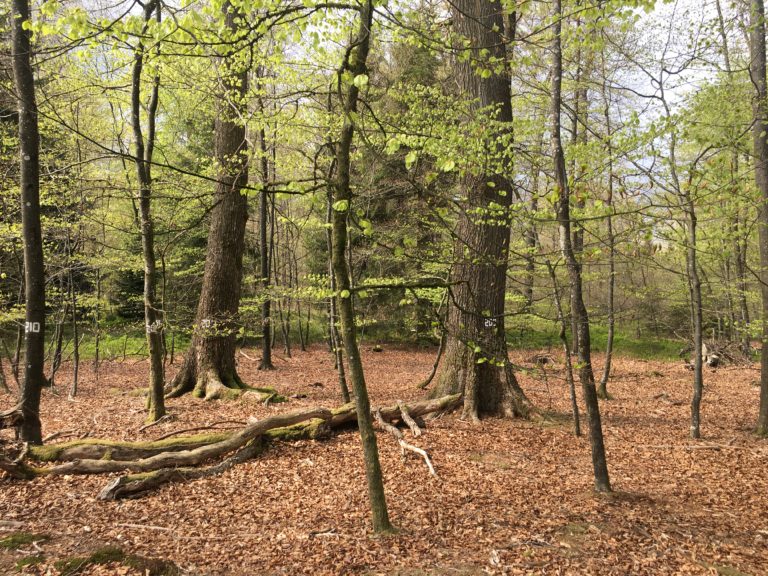
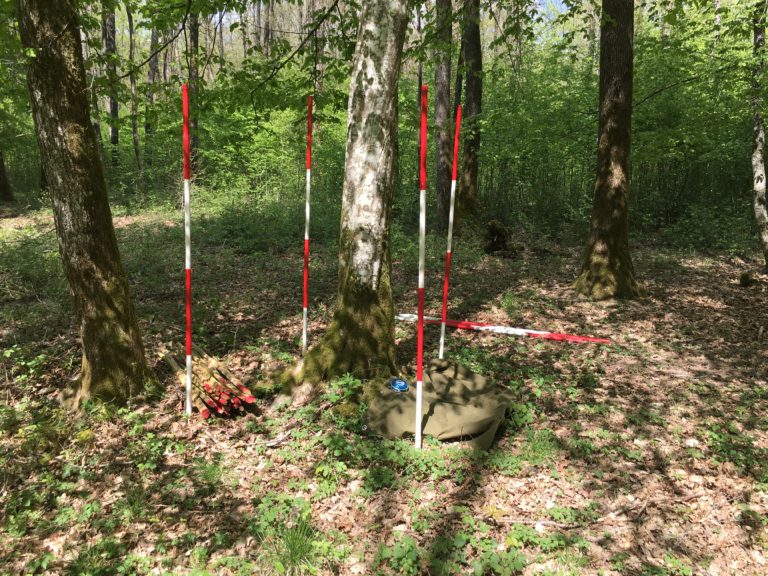
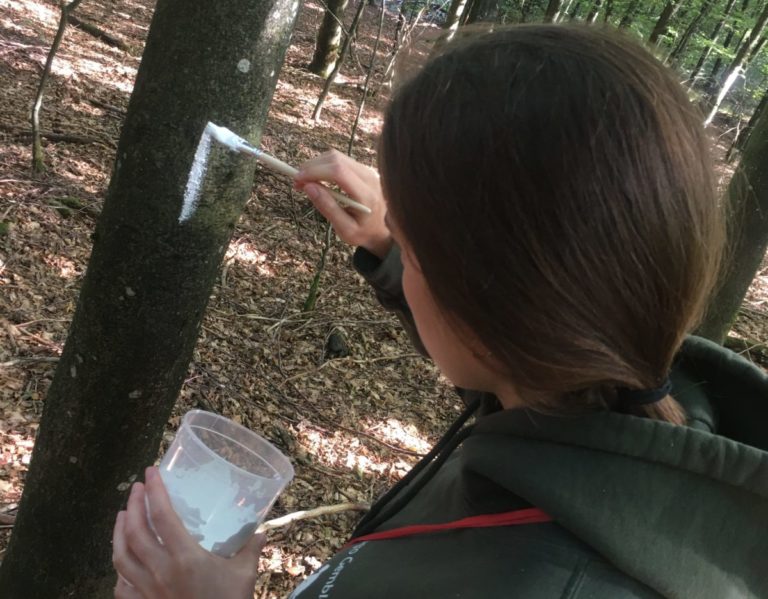
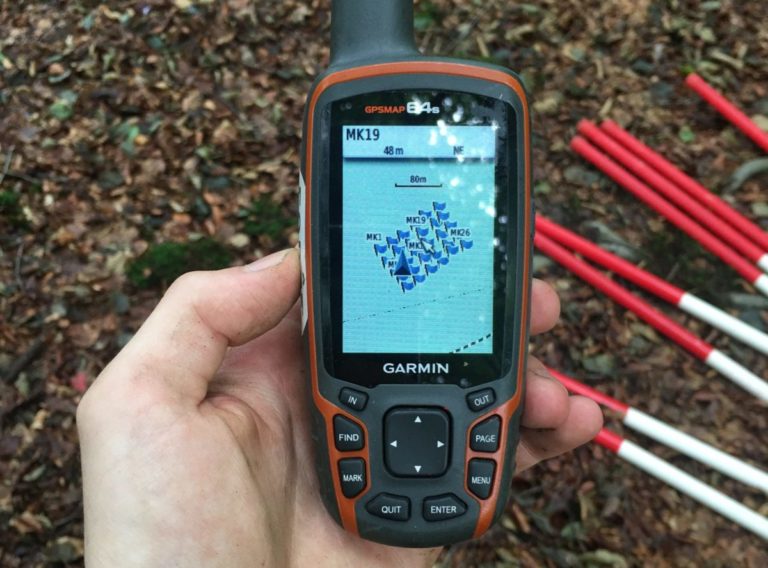
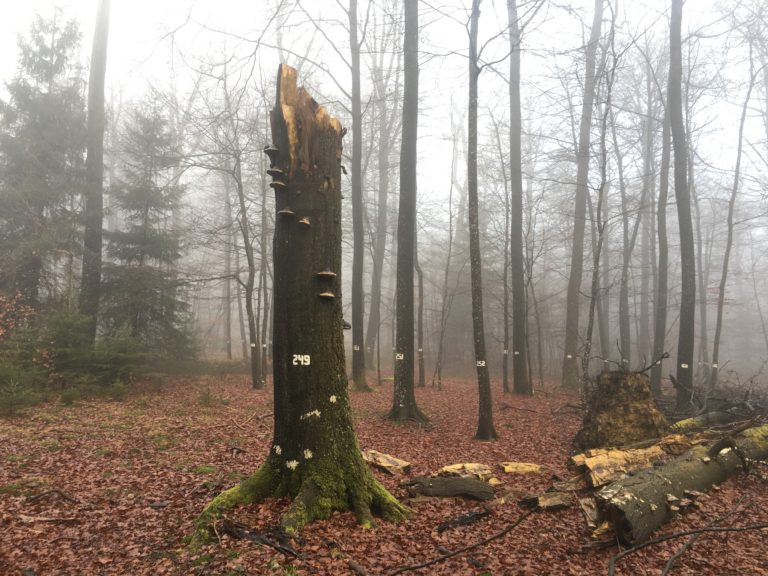
Travailloscope
A travailloscope is an educational tool designed to help people adopt good practice in forestry work and to help foresters understand the real costs of each task and the impact it can have on the forest ecosystem. The tool enables simulated choices to be made, analysed and compared on an objective basis allowing for team debate.
Diminuer l’impact des travaux forestiers sur l’environnement tout en limitant leur coût ? C’est possible si vous avez une connaissance fine et de terrain des travaux forestiers dit « ciblés ».
To this end, travailloscopes are essential educational tools that allow managers to practice and acquire the knowledge that is indispensable for managers.

Our travailloscopes
Travailloscope de Grimbiémont (Belgique)
Ce dispositif aborde la thématique parfois complexe des travaux forestiers. En effet, au vu du contexte actuel de nombreux forestiers sont à la recherche d’alternatives pour diminuer les investissements liés au renouvellement forestier. Le travailloscope de Grimbiémont se concentre sur le mélange d’essences, la limitation des coûts, la colonisation du sol, les moments clés d’intervention et les semis utiles.
Travailloscope de Daverdisse (Belgique)
En octobre 2021, un premier travailloscope a été inauguré en peuplements résineux à Daverdisse. Celui-ci répond amplement aux préoccupations actuelles des forestiers, abordant des situations de blocage et la thématique des mélanges sur une zone qui a été mise à blanc pour raison sanitaire (scolytes).
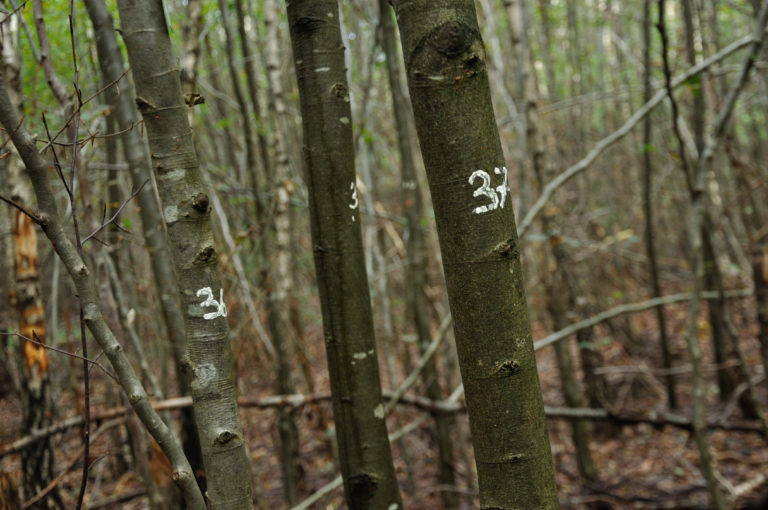
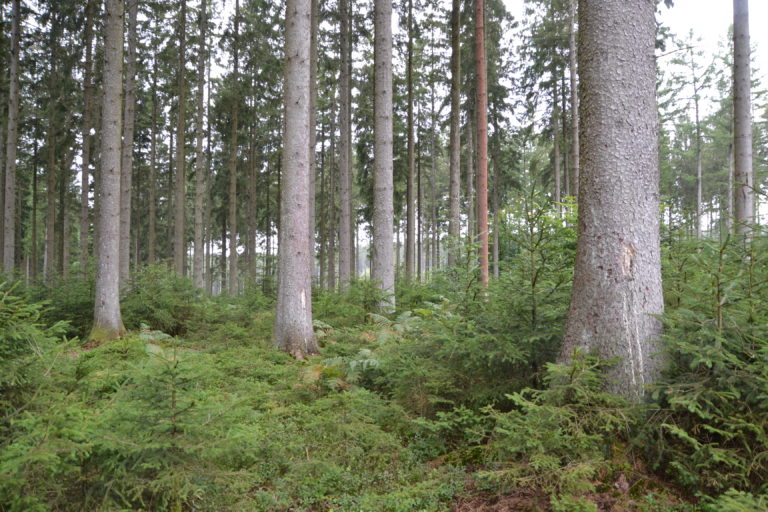
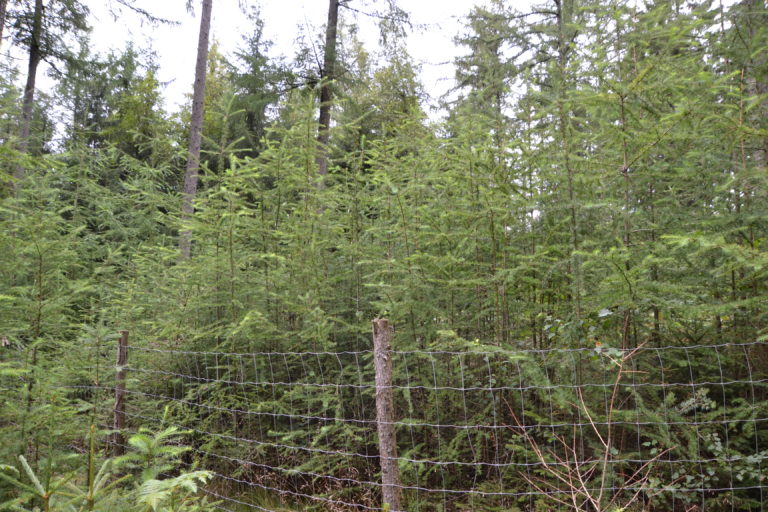

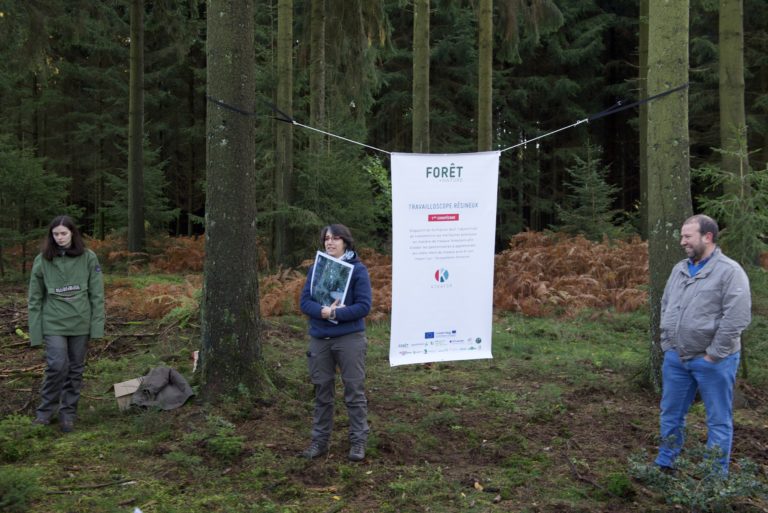
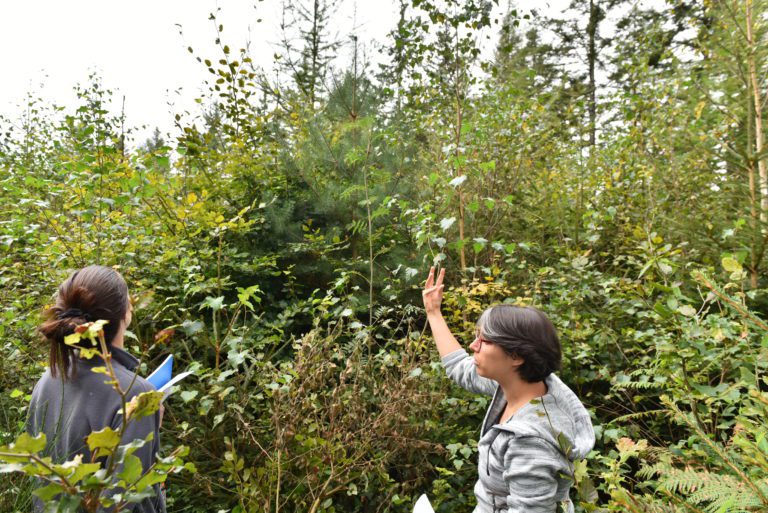
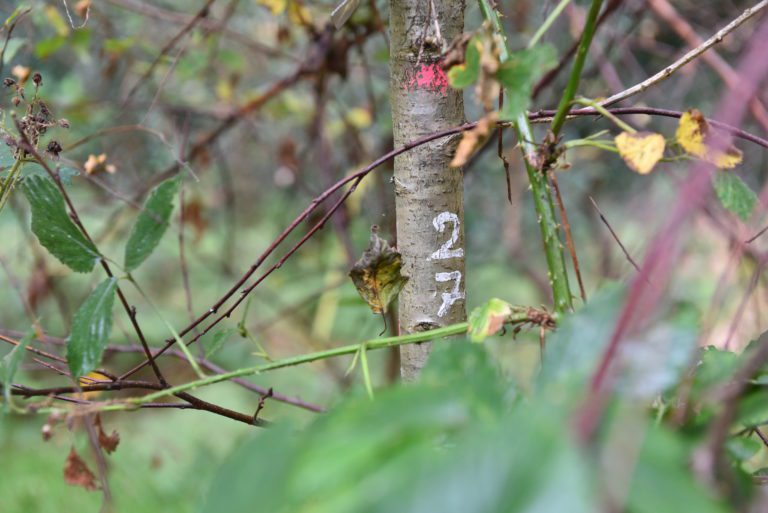
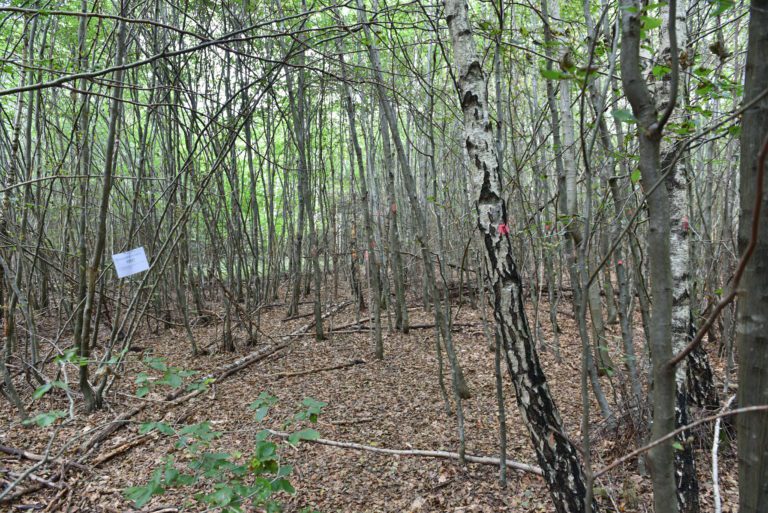
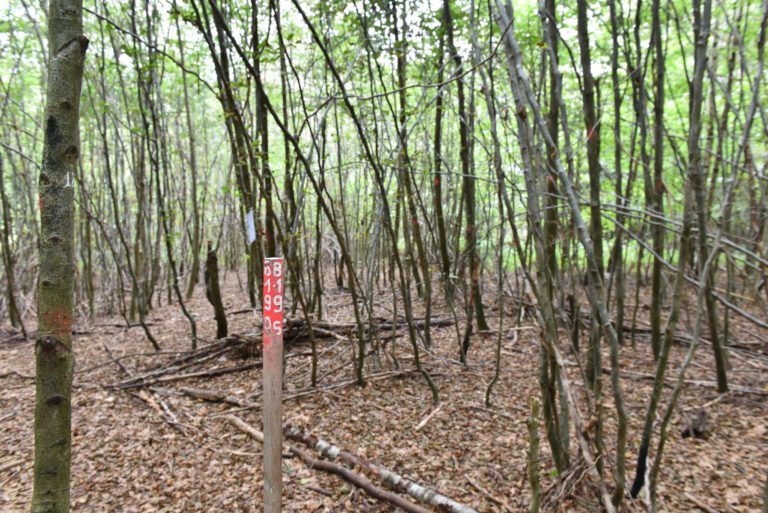
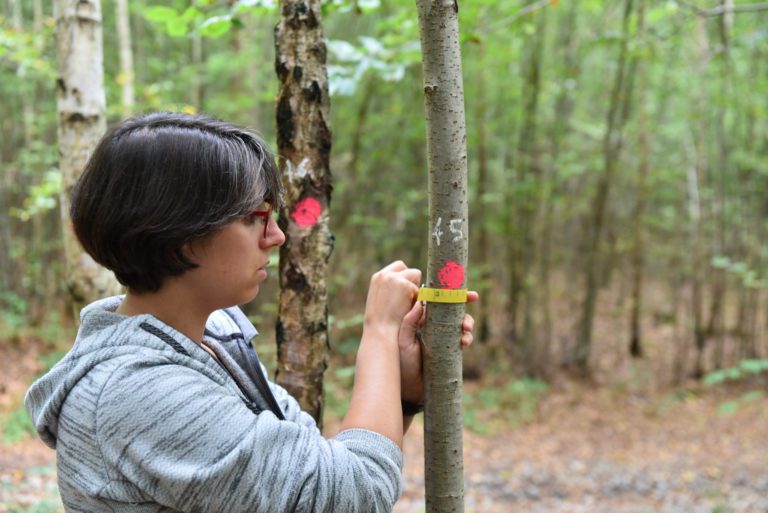
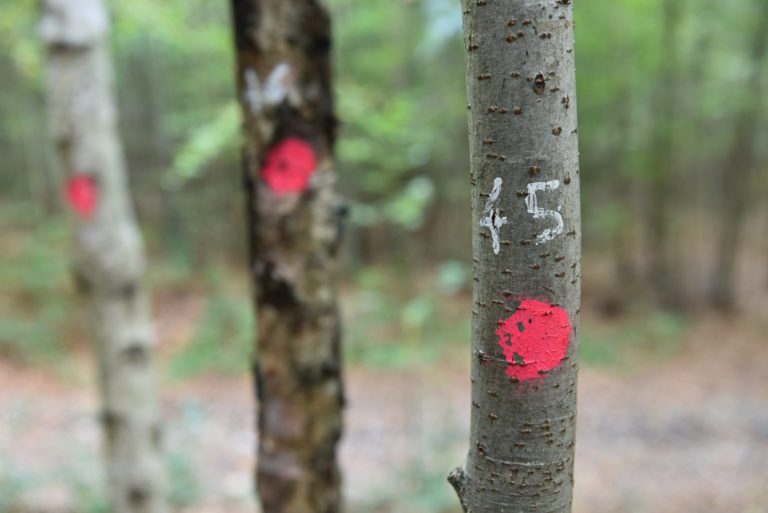
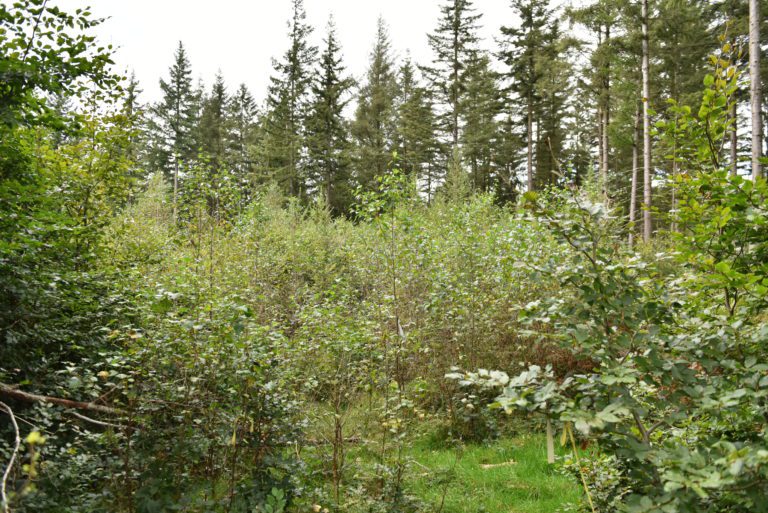

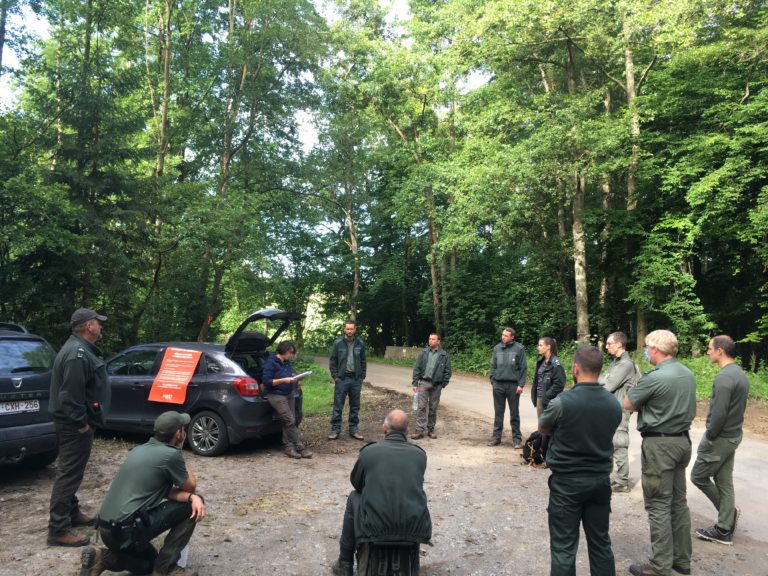
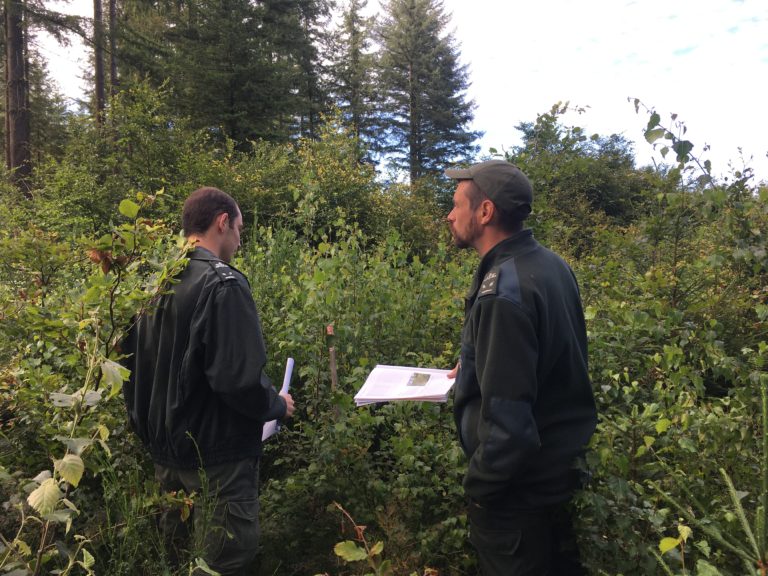
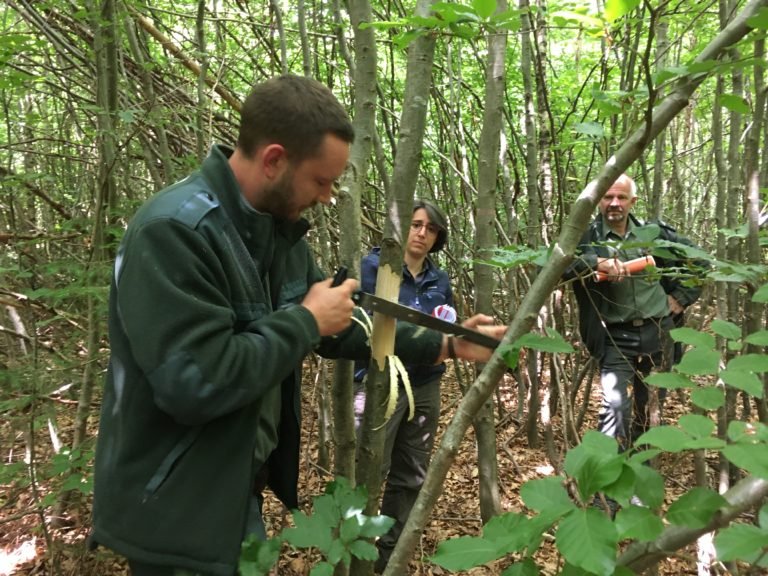
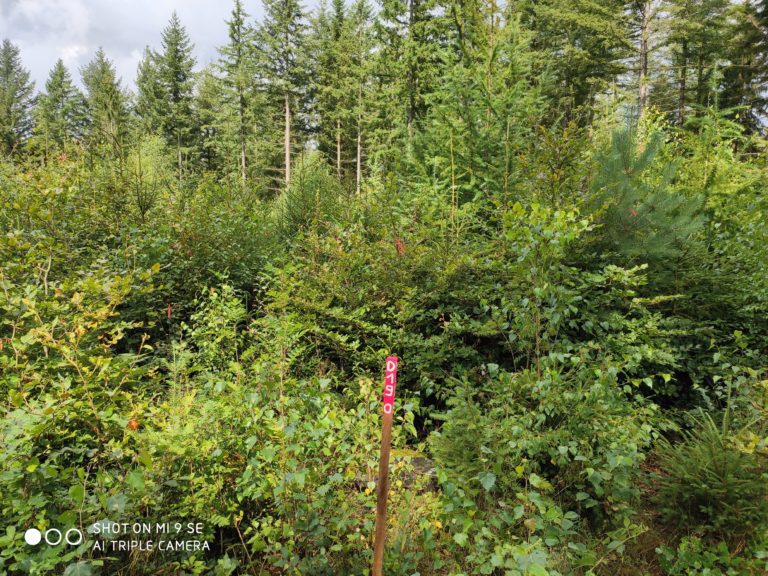
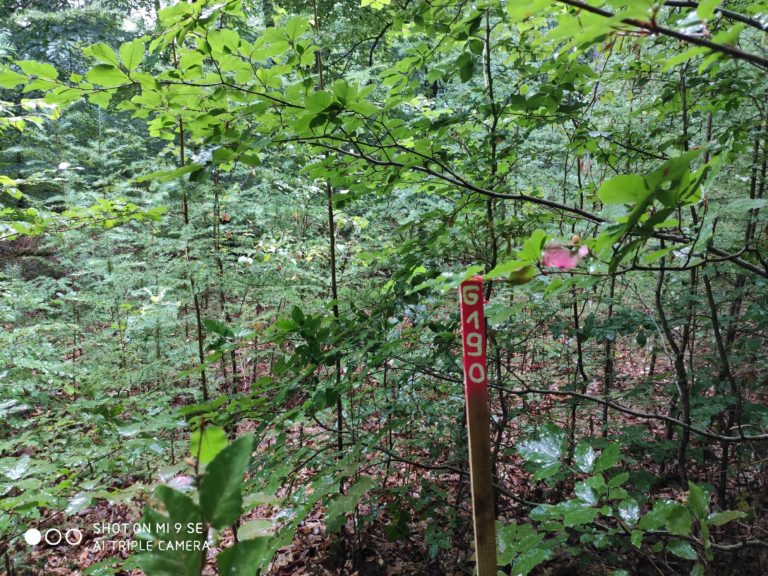
Target trees
As part of the Five-Year Plan for Forest Research and Outreach, Forêt.Nature is monitoring 9 experimental systems in collaboration with the DNF, UCLouvain and ULiège. These systems are intended to measure the growth of target beech and oak trees which have been thinned to varying degrees. Four methods of thinning are applied to assess the effects of thinning on the growth of trunks and crowns, height growth and tree vigour in comparison with their competitors. For nearly 20 years, around 450 trees have been measured on a yearly basis, generating more than 120,000 pieces of data.






Indicator species of flora
We have 8 different routes to correspond to various different contexts encountered by forest officers.
These routes are designed for you to encounter several different stations, which can be analysed and interpreted using a floristic list. For example:
- Station 1: flat area without any specific constraints
- Station 2: flat area with an alternating water regime constraint
- Station 3: sloping site facing south
- Station 4: flood plain site, located next to a river
- Station 5: sloping site facing north
Routes have been set up in the municipalities of Saint-Vith, Spa, Namur, Rochefort, Saint-Hubert, Mons, Viroinval and Virton.
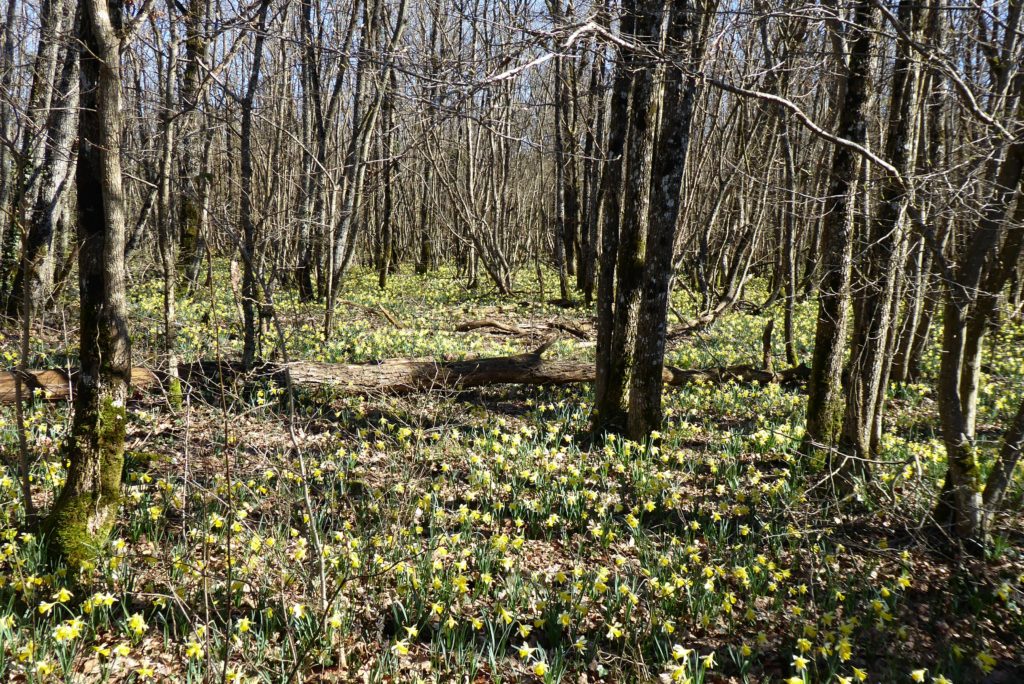
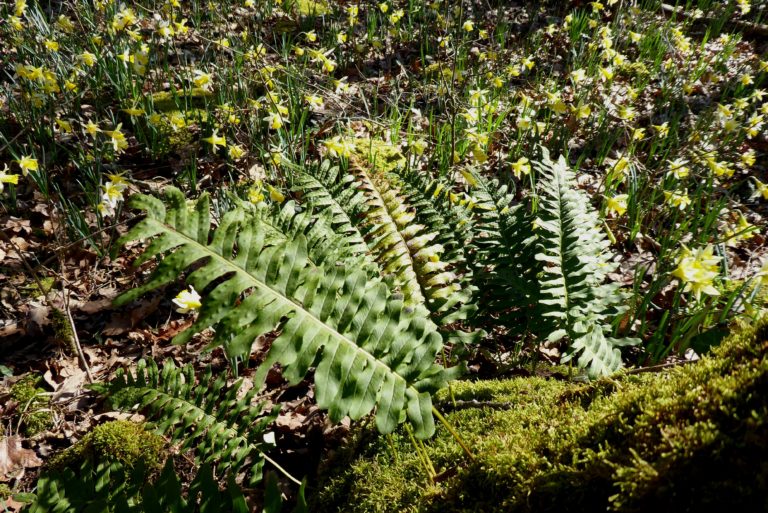
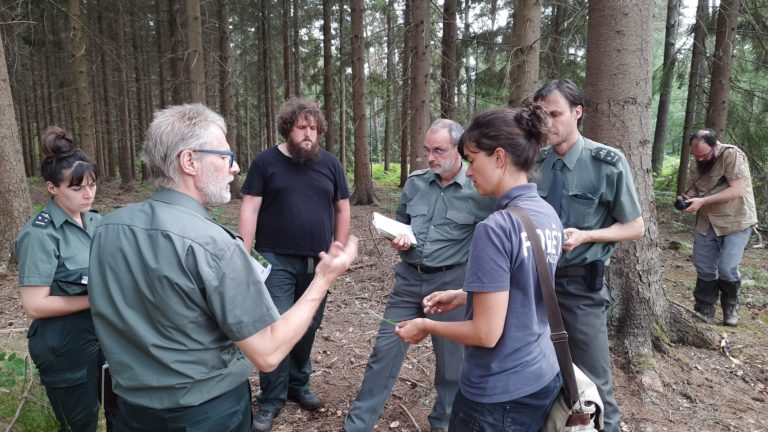
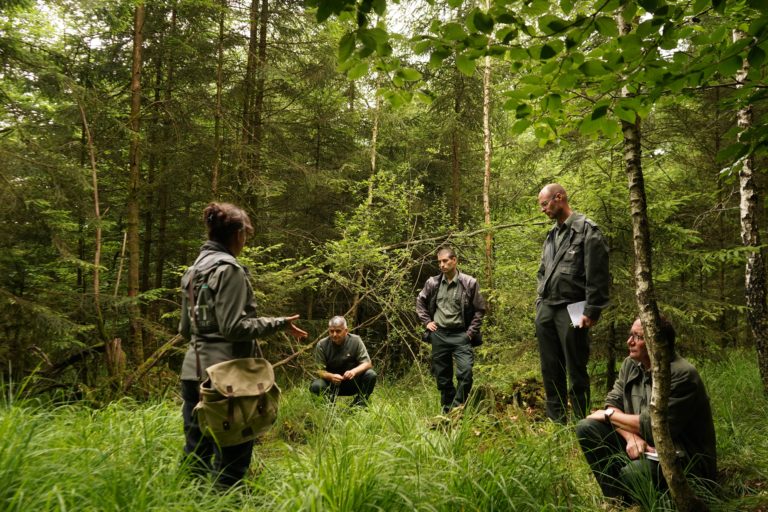

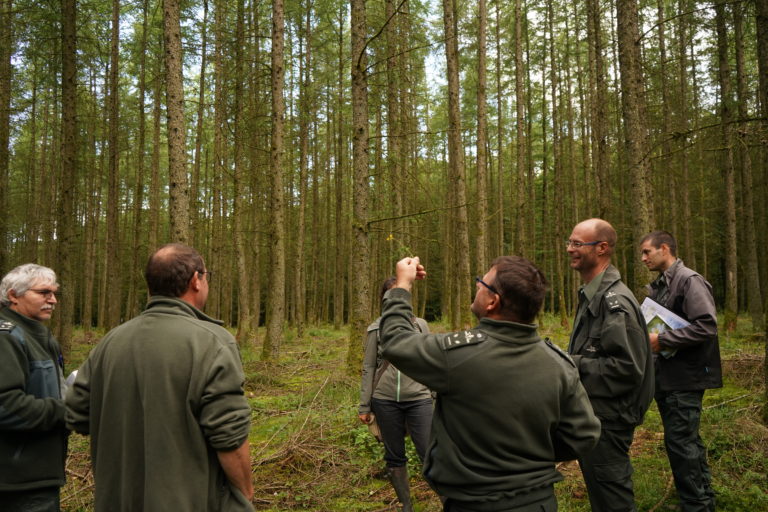
Wood quality
The tool involves a route dedicated to the observation of standing trees, in order to sharpen the eye to be able to “read the bark” and identify shape defects. After learning to spot the different defects and peculiarities, participants examine the 11 numbered trees in small groups or alone. They assess their quality, identify defects and evaluate the possible uses of the log. Afterwards, these trees are examined as a whole group as part of a debriefing to update knowledge and experiences.
Il s’agira ensuite de concentrer l’attention sur l’observation de l’impact dans le bois des défauts repérés sur l’écorce, notamment grâce à des grumes spécialement sciées afin d’exposer les défauts. Une dizaine de grumes ont été sciées en plot. Chaque planche est scrutée pour observer la répercussion des défauts sur l’usage potentiel.
Enfin, la « Visite guidée du parc à grume » – qui regroupe une sélection d’arbres de très haute qualité ainsi que leurs surbilles – permet d’observer ce qui est techniquement et commercialement toléré pour des usages spécifiques et ce qui pose problème. Les « défauts de tranches », qui ne sont pas repérables a priori sur les arbres sur pied, peuvent y être examinés.

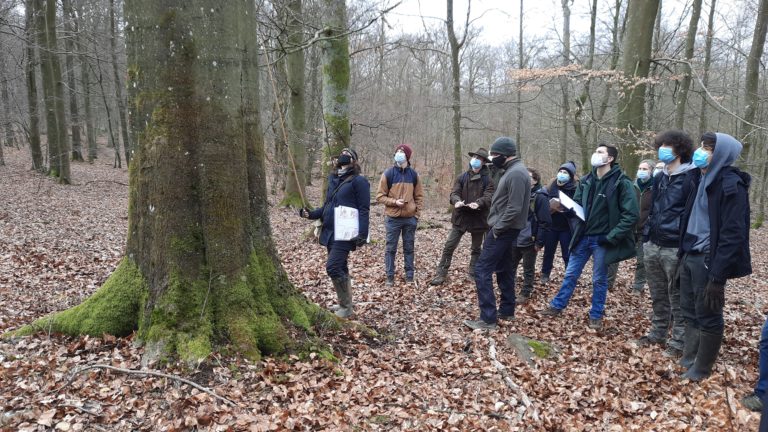

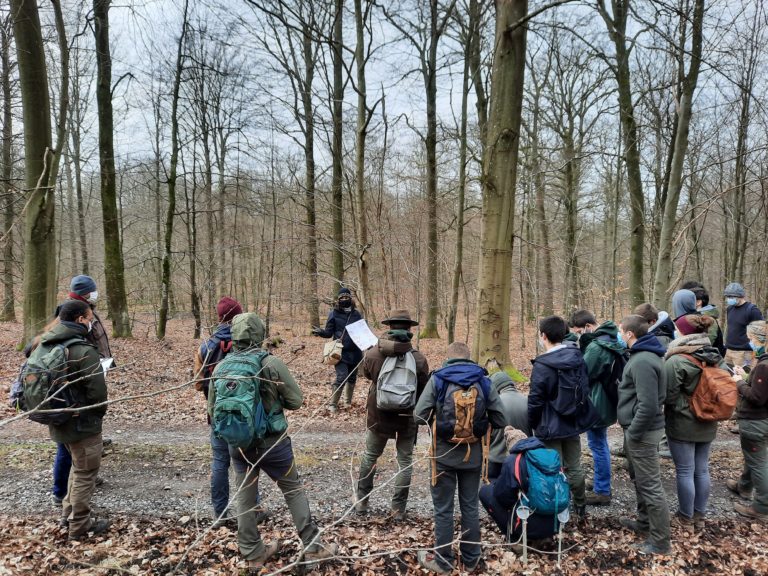

Log yard (parc à grumes)
C’est un espace aménagé pour valoriser les plus belles grumes de Wallonie et organiser leur vente aux enchères. Il s’agit d’un dispositif du DNF (SPW ARNE) que nous utilisons pour nos formations « Qualité des bois " and " Visite guidée du parc à grumes de Wallonie ». Cette vente sur parc à grumes est organisée de façon coordonnée avec la France, l’Allemagne, le Grand-Duché de Luxembourg et la Flandre. Cette vente commune permet de mutualiser les acheteurs potentiels, d’avoir davantage de concurrence ainsi qu’une meilleure attractivité des lots mis en vente.

La vente sur parc à grumes permet au DNF de promouvoir la valorisation de grumes de très haute qualité issues des forêts publiques. Elle présente plusieurs atouts.
- It serves as a showcase to exhibit the quality of Walloon wood and the expertise of DNF officers.
- It provides an opportunity to promote quality wood to specialist buyers.
- It brings together exceptional quality woods in one place and makes access easier for buyers.
- It encourages forestry which promotes the production of quality wood.
Le volume proposé à la vente est d’environ 300 m3/an, ce qui représente moins de 0,1 % du volume de bois feuillu exploité annuellement en forêt publique.
Les prix de vente sont élevés. En 2022, les chênes sessiles et pédonculés ont été vendus au prix moyen de 1293€/m3 (prix max. 3469€/m3).

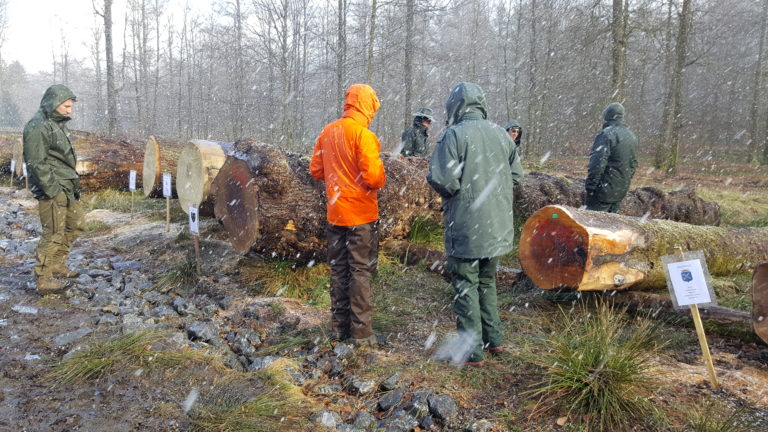


Some training courses do not involve a training tool.
Receipt of plants is built on decentralised plant supplies and field presentation
Marking as part of irregular forest treatment supports you in the area of effective marking
Ecological Species Database: pedology which allows you to check the results of your queries by sampling your soils.

